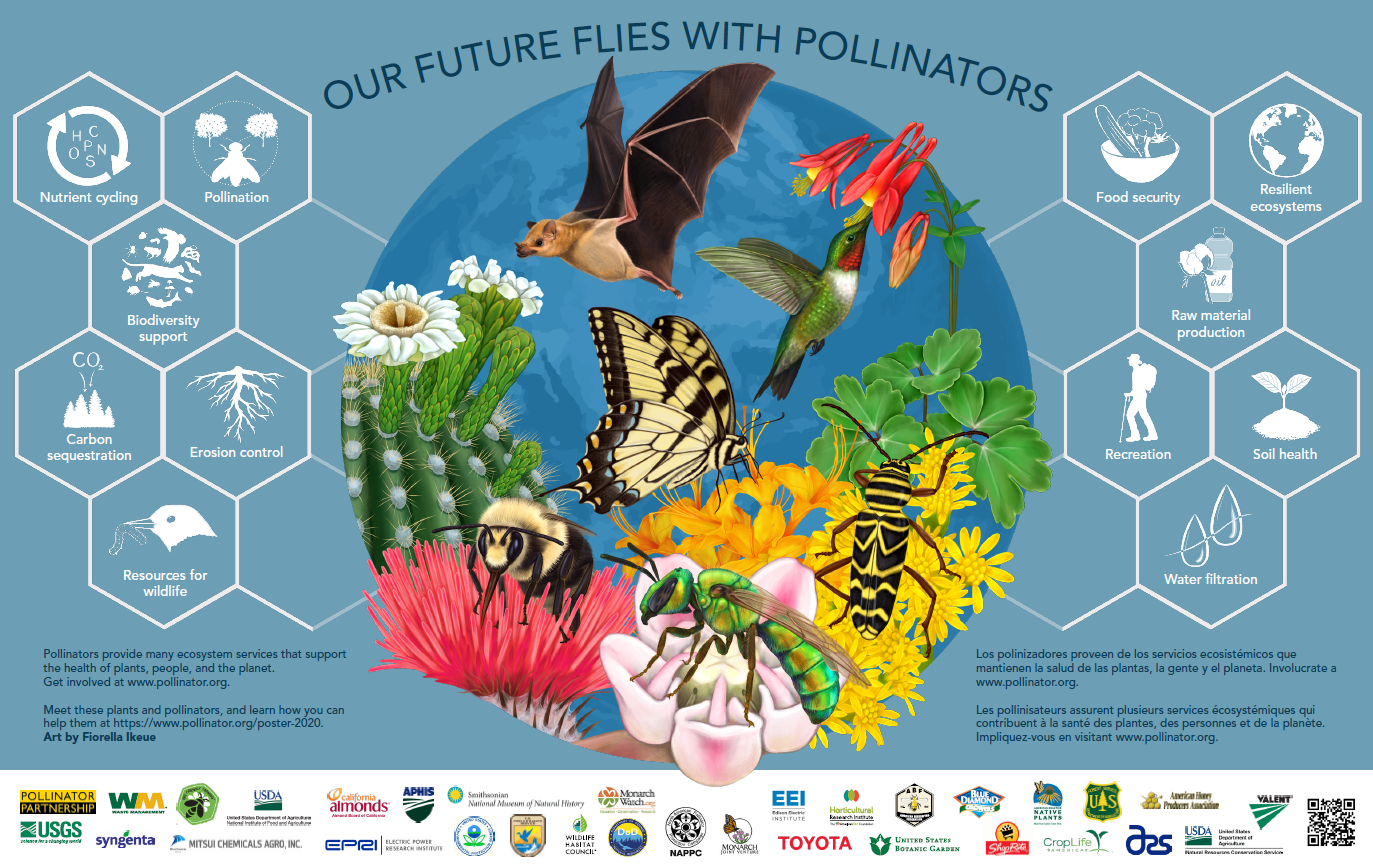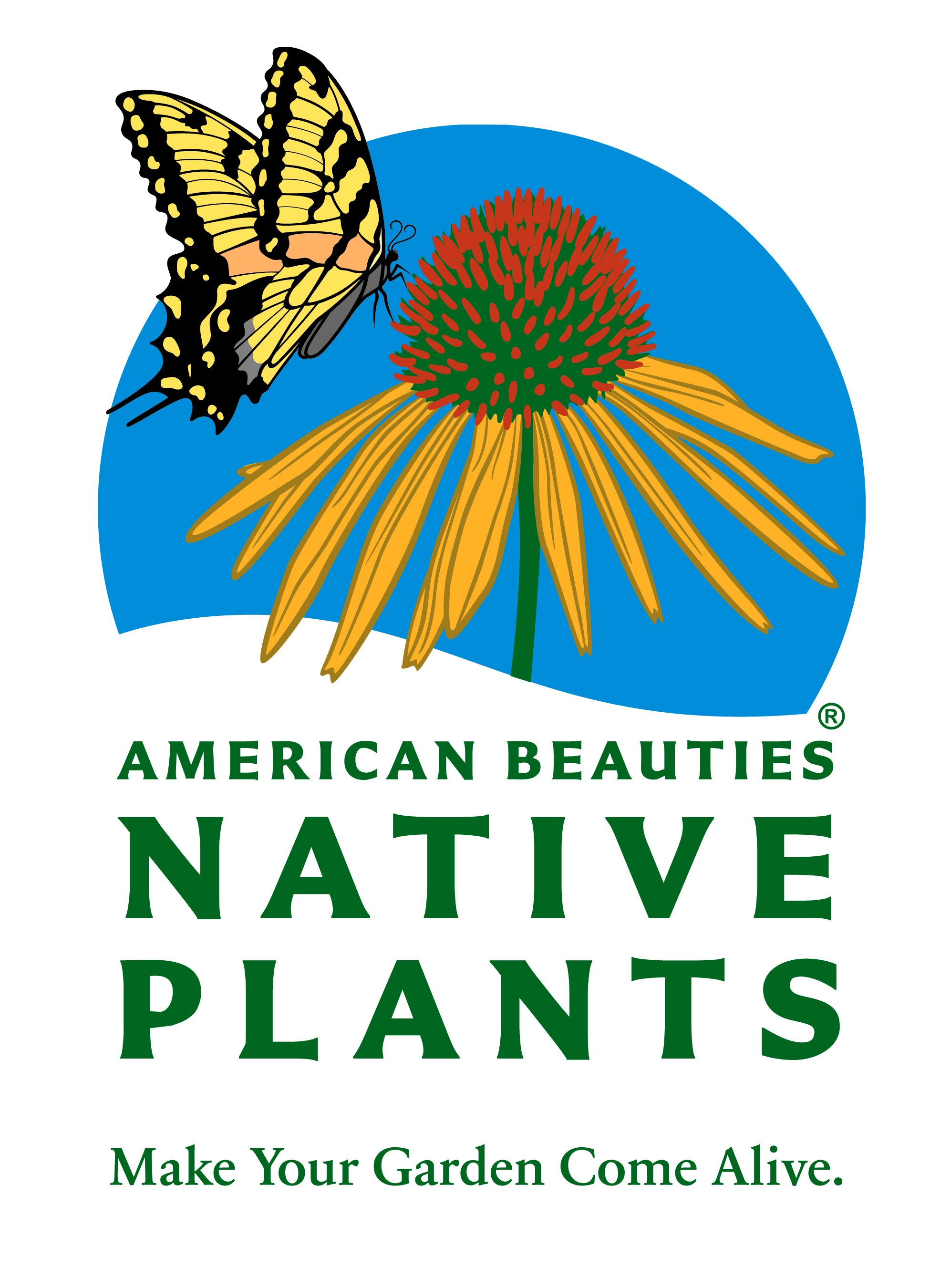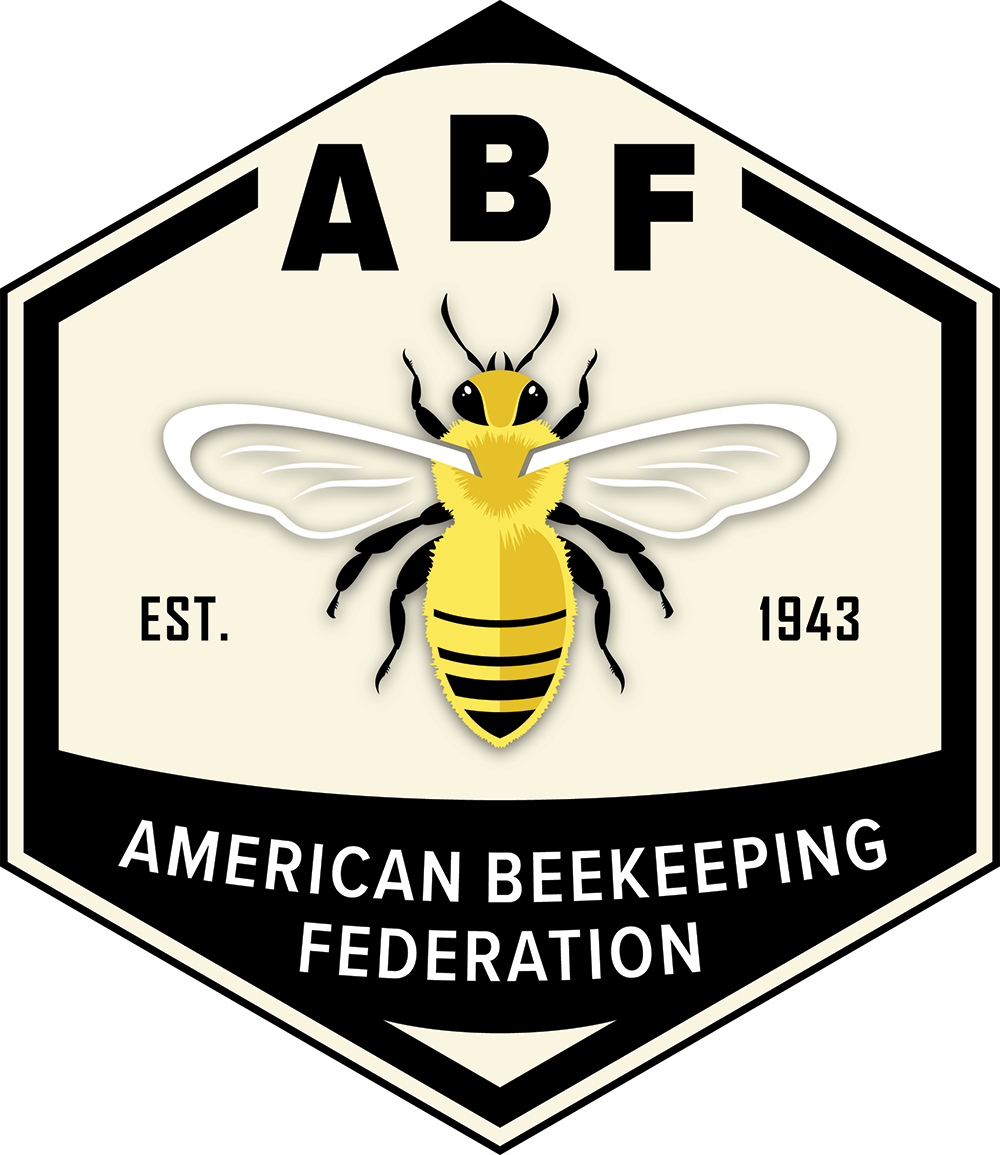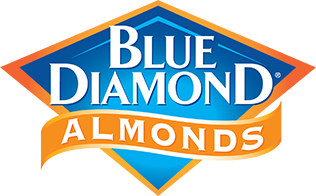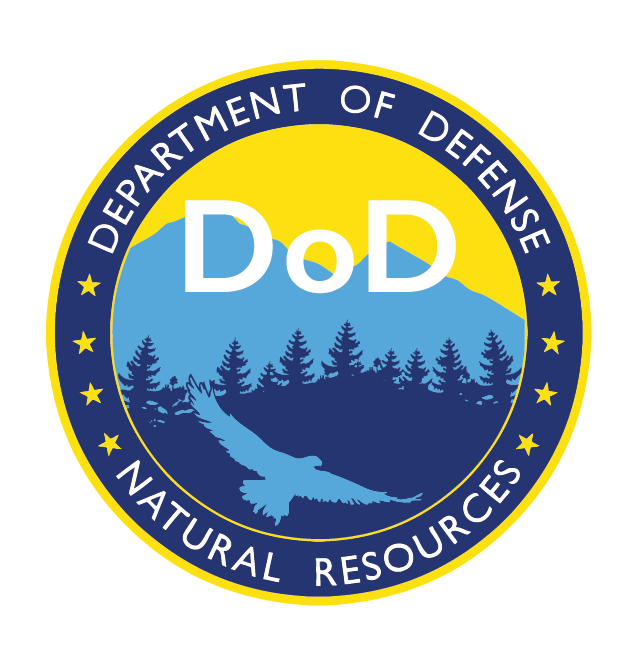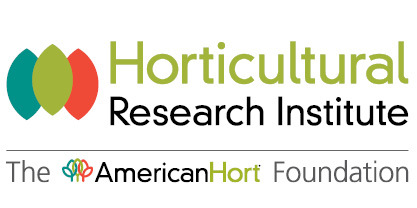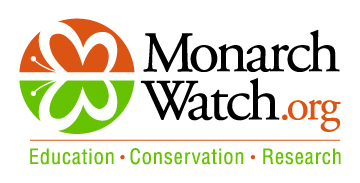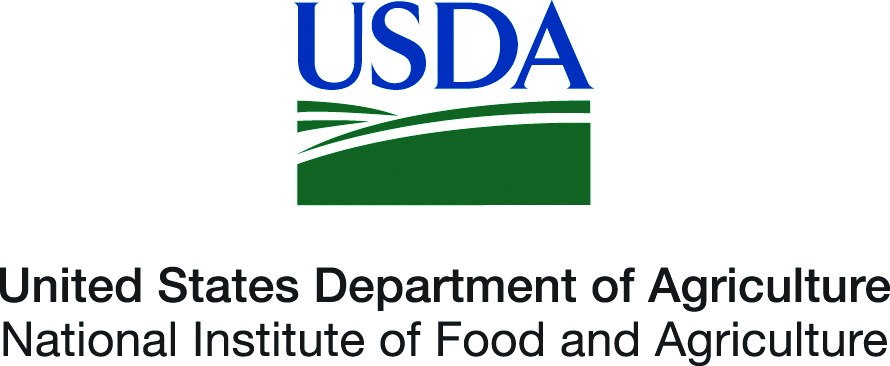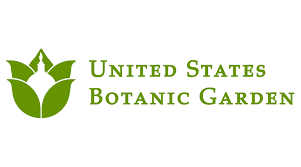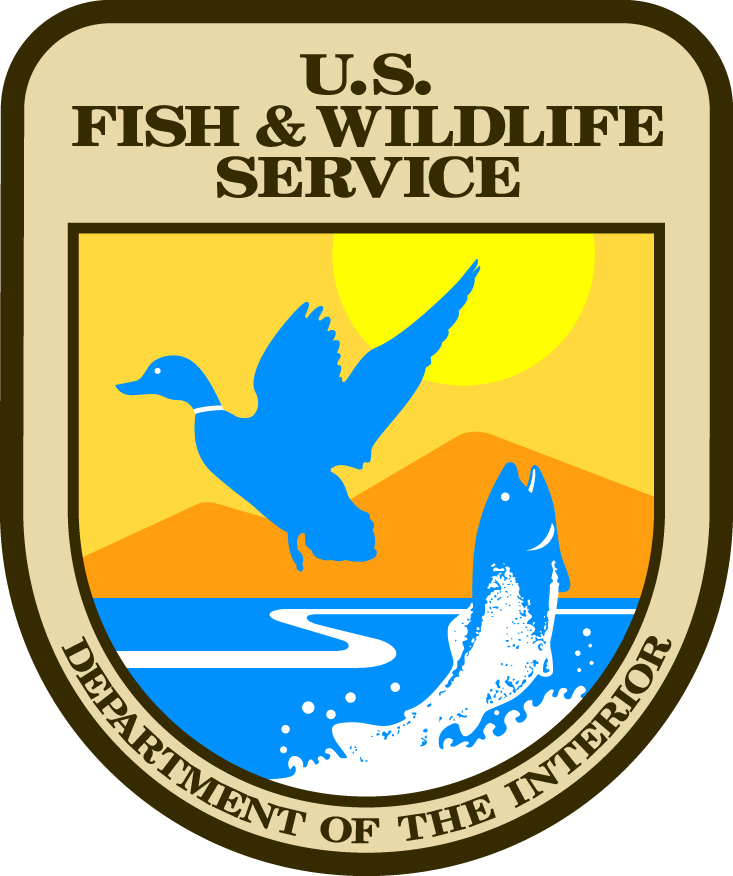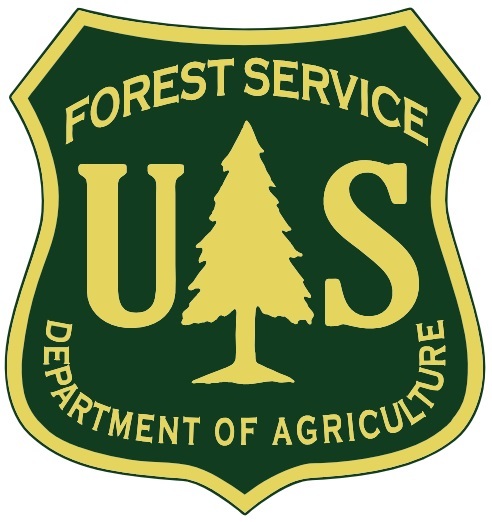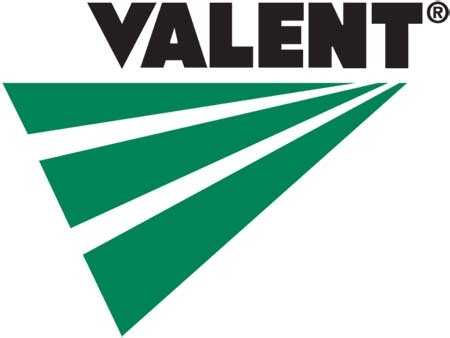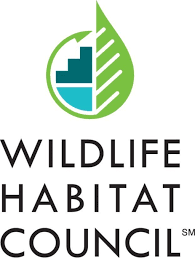Our Future Flies With Pollinators Poster
Click here for a virtual tour of the poster!
(Be patient. This sometimes takes a while to load.)
Download PosterOrder Poster
About the Artist

Fiorella Ikeue is an artist and illustrator based in Oakland, California. A lifelong interest in science and art led her to pursue a degree in biology from Kalamazoo College and a master’s certificate in science illustration from Cal State Monterey Bay. Eye-catching and intimate, her work aims to connect the viewer with aspects of nature, environmental issues and scientific ideas. Fiorella currently works as an artist assistant and illustrator at Ink Dwell studio and as a freelance illustrator. Her portfolio can be viewed at fiorellaikeue.com
Process
When I saw the theme for this year’s poster, I envisioned imagery that was informative and easy to understand as well as beautiful. A central circle evokes the planet and a lens through which we view the world, and the honeycomb structure houses icons that represent ecosystem services provided by pollinators. All the artwork for the poster was created digitally using Procreate and Adobe Photoshop, with the final layout done in Adobe InDesign. After many hours of research and consulting reference photos and species descriptions, I created sketches of each pollinator and plant. The line sketch served to create areas of blocked color which became the base for the detailed digital painting. I was happy to discover that painting on an iPad with the Apple Pencil is very much like using colored pencil, which is my favorite traditional medium! It’s also fun to be able to zoom in really close and give something small a lot of attention and love.
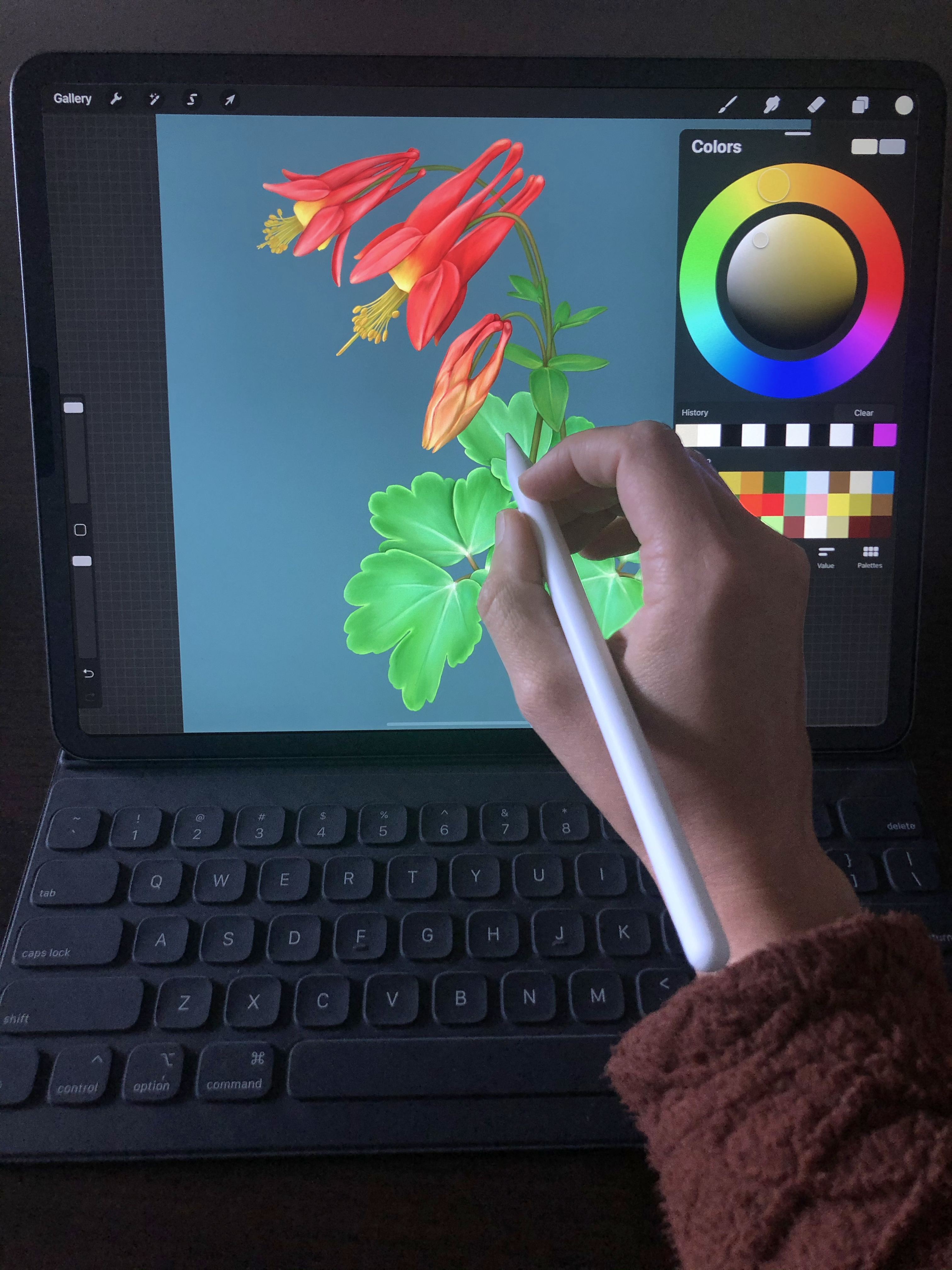
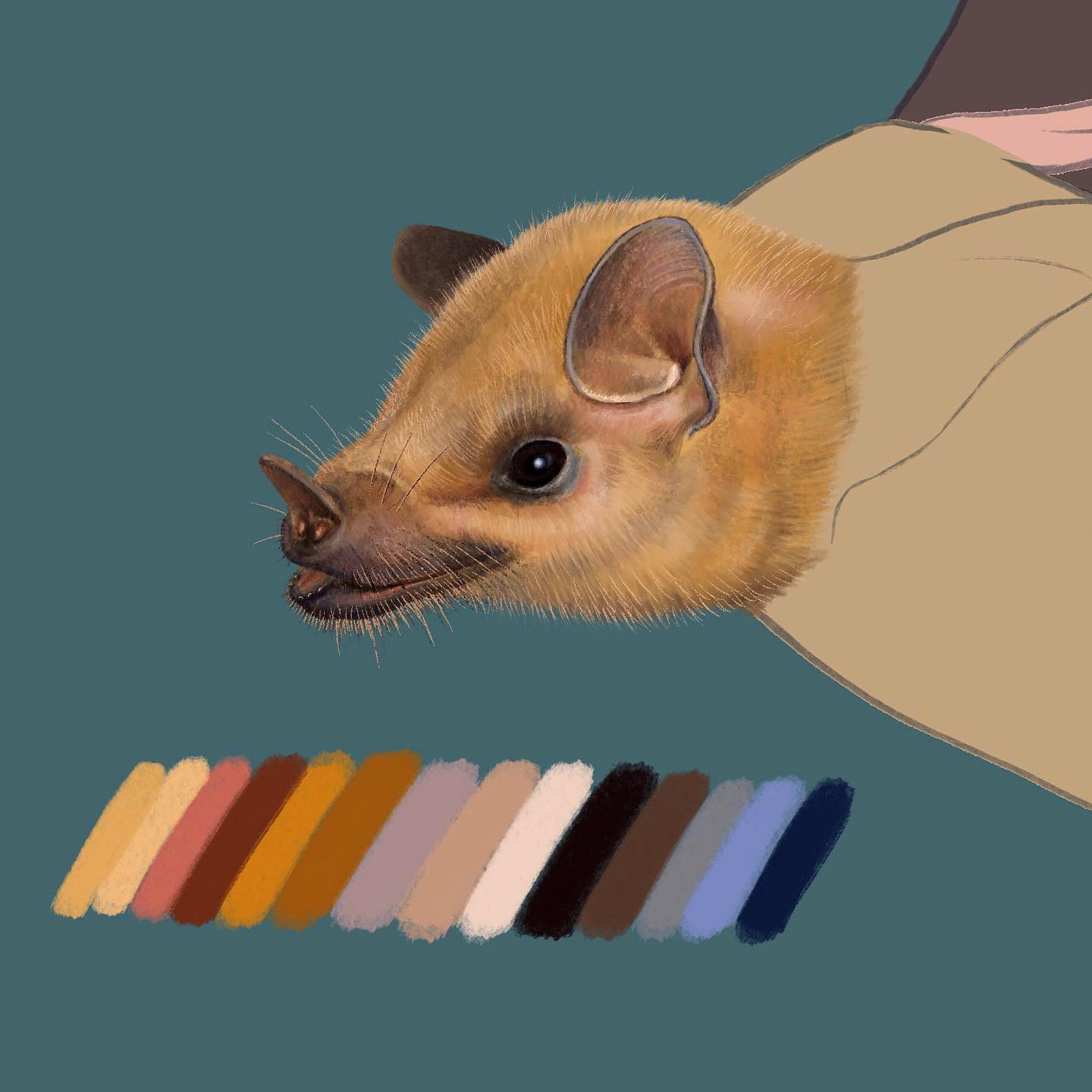
Ecosystem Services
Pollination
Pollination is the process by which pollen is moved within flowers or carried from flower to flower by pollinating animals such as birds, bees, bats, butterflies, moths, beetles, or other animals, or by the wind. Within the same species, this leads to fertilization and successful seed and fruit production for plants. Pollination ensures that a plant will produce full-bodied fruit and a full set of viable seeds. Pollinators are the animal species that facilitate the transfer of pollen. A diverse array of different plants rely on the assistance of pollinators for this process to occur and otherwise would be at risk of extinction. This includes more than 180,000 different plant species and over 1,200 crops, making pollinators an essential part of the health of plants, people, and the planet!
https://www.nps.gov/teachers/classrooms/pollinators-on-the-tallgrass-prairie.htm
https://www.fs.usda.gov/managi...
https://www.pollinator.org/pollinators
https://www.pollinator.org/pollination
Photo by John Severns.
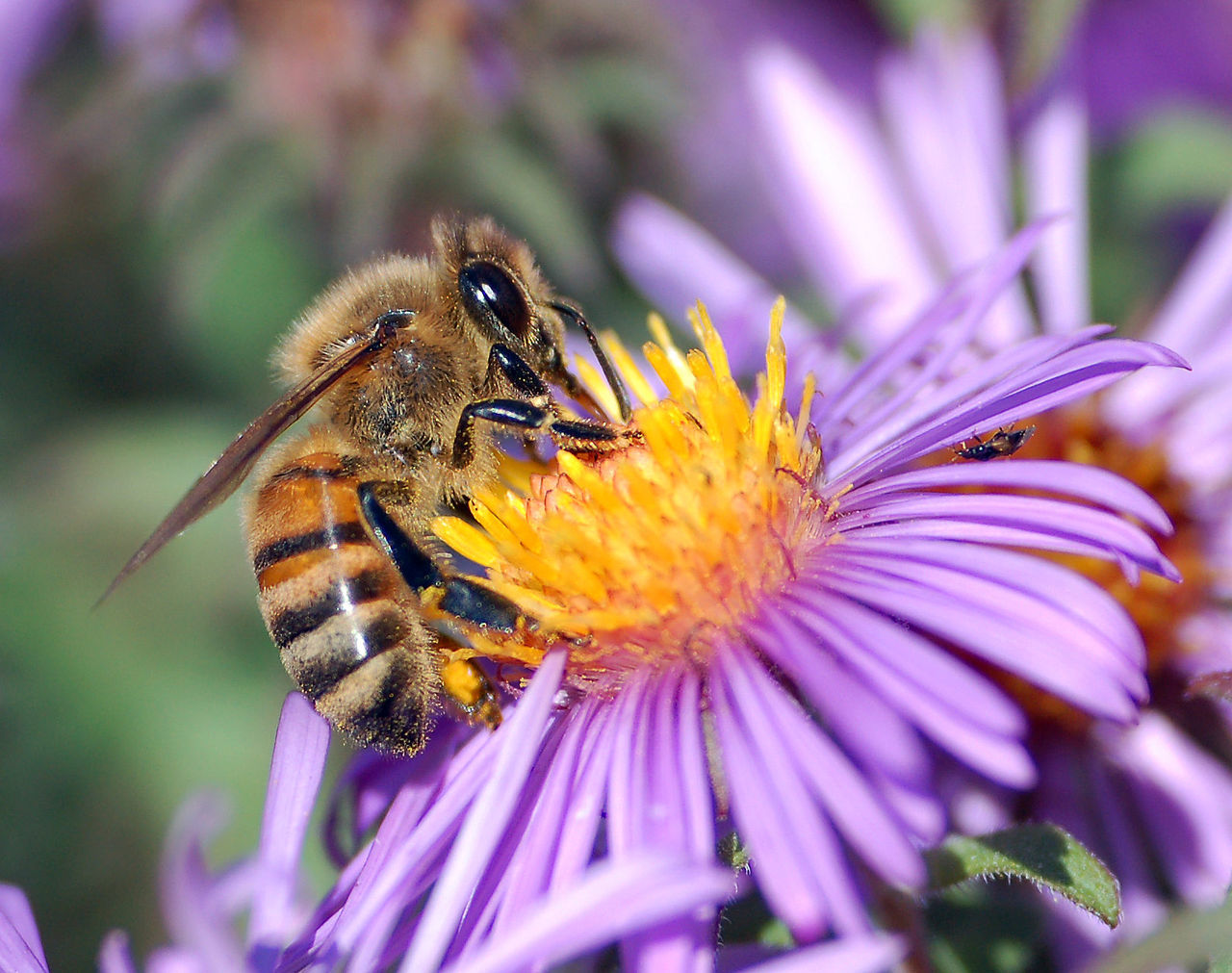
Photo by Brocken Inaglory.
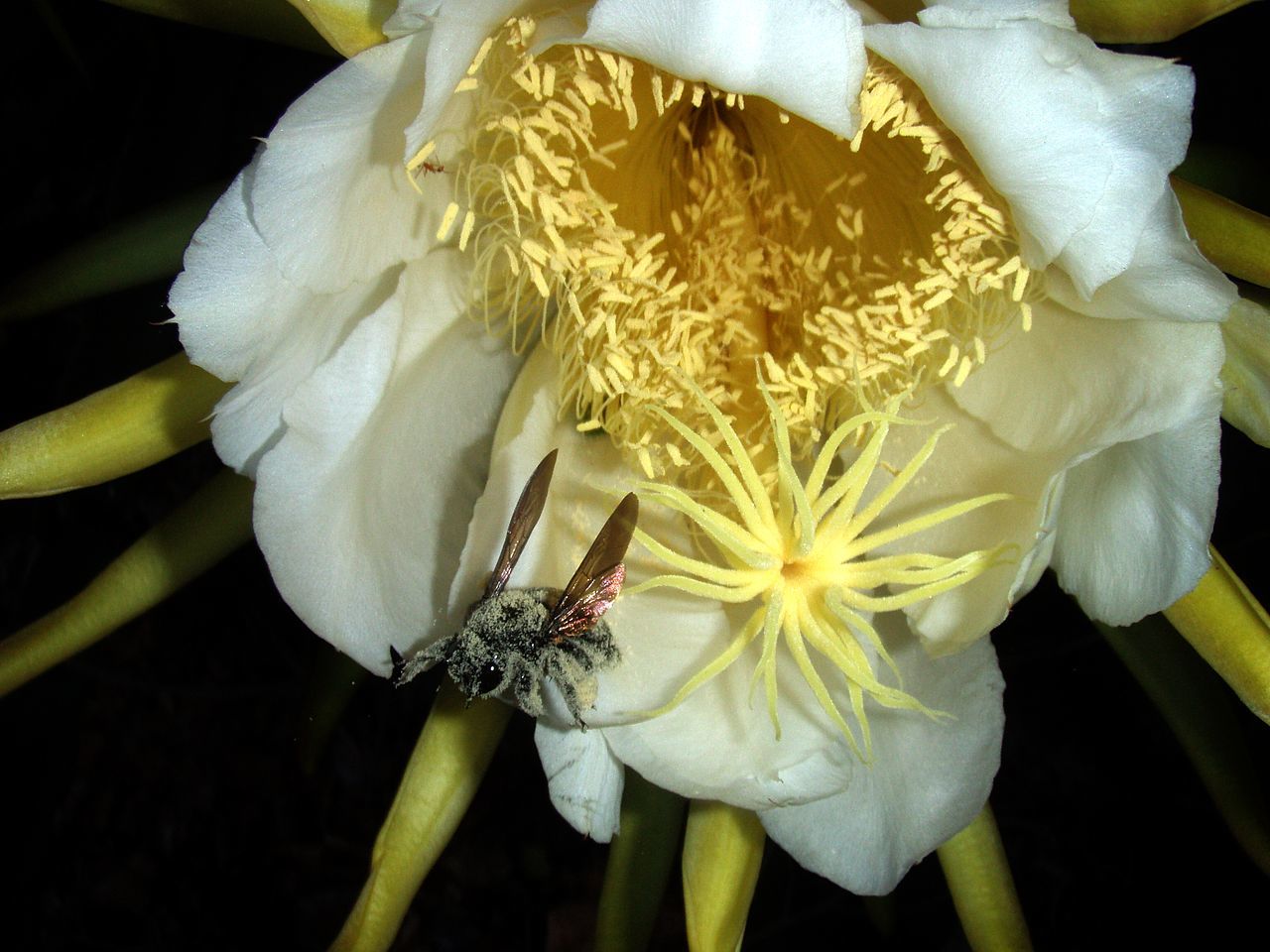
Biodiversity Support
Biodiversity is the amount of different species in a given environment or habitat. An area with high biodiversity will have a high number of different species filling different roles within the ecosystem. Pollinators of many different species help improve biodiversity by facilitating the reproduction of native and diverse plant species that, in turn, provide food and shelter for many birds, mammals, and insects. Biodiverse ecosystems are more resilient against sudden changes to the environment such as introduction of disease, natural disasters, changes in weather, and interference by humans. In fact, sustainable natural and agricultural ecosystems worldwide are only possible with sufficient biodiversity. In the United States alone, the economic and environmental benefits of biodiversity are estimated to be worth around $300 billion annually.
https://www.nationalgeographic.org/encyclopedia/biodiversity/
https://www.worldwildlife.org/pages/what-is-biodiversity
https://plato.stanford.edu/entries/biodiversity/
https://www.jstor.org/stable/1313097?seq=1
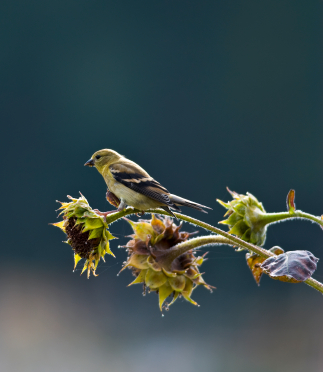
Photo by Luc Viatour.

Carbon Sequestration
Carbon sequestration is the removal of carbon from the atmosphere through capture or storage of the gas in mediums such as plant materials and soils. Photosynthesis, the process by which plants synthesize their food, uses atmospheric carbon dioxide and gives off oxygen in its place, storing atmospheric carbon as biomass. The plants that rely on pollinators are absolutely critical to maintaining the balance of our atmosphere that allows us to survive and thrive. By helping more trees and other plants establish, pollinators help mitigate climate change and positively affect the wellbeing of the planet.
https://www.fs.usda.gov/ecosys...
https://www.fs.usda.gov/features/power-one-tree-%E2%80%93-very-air-we-breathe
https://ssec.si.edu/stemvisions-blog/what-photosynthesis
https://royalsocietypublishing.org/doi/full/10.1098/rstb.2007.2185
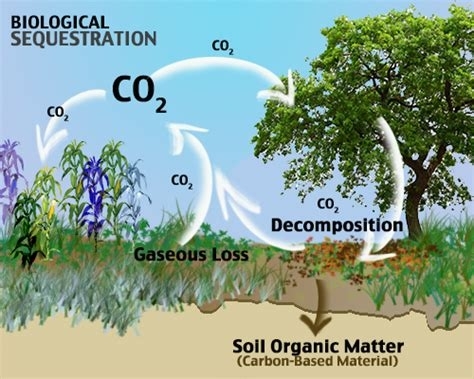
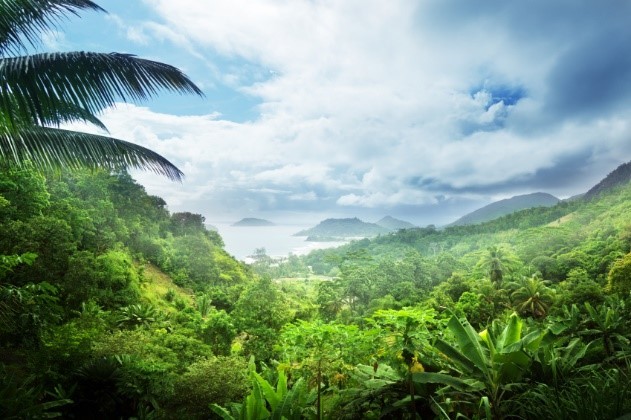
Erosion Control
Erosion is the gradual breakdown of land or other solids from forces including wind, rain, ocean waves, or ice. The roots of pollinated plants bind to soil and rock particles, helping hold the soil together during floods, windstorms, and even landslides to prevent erosion. One reason why deserts are such severely eroded landscapes is that they lack trees, shrubs, and other plant species to hold their soils in place. Coastal and cliffside habitations and roadways are at risk of severe damage if erosion leads to landslides and fallen debris.
https://www.nationalgeographic.org/encyclopedia/erosion/
https://www.britannica.com/science/erosion-geology
Photo by Katharina Helming.
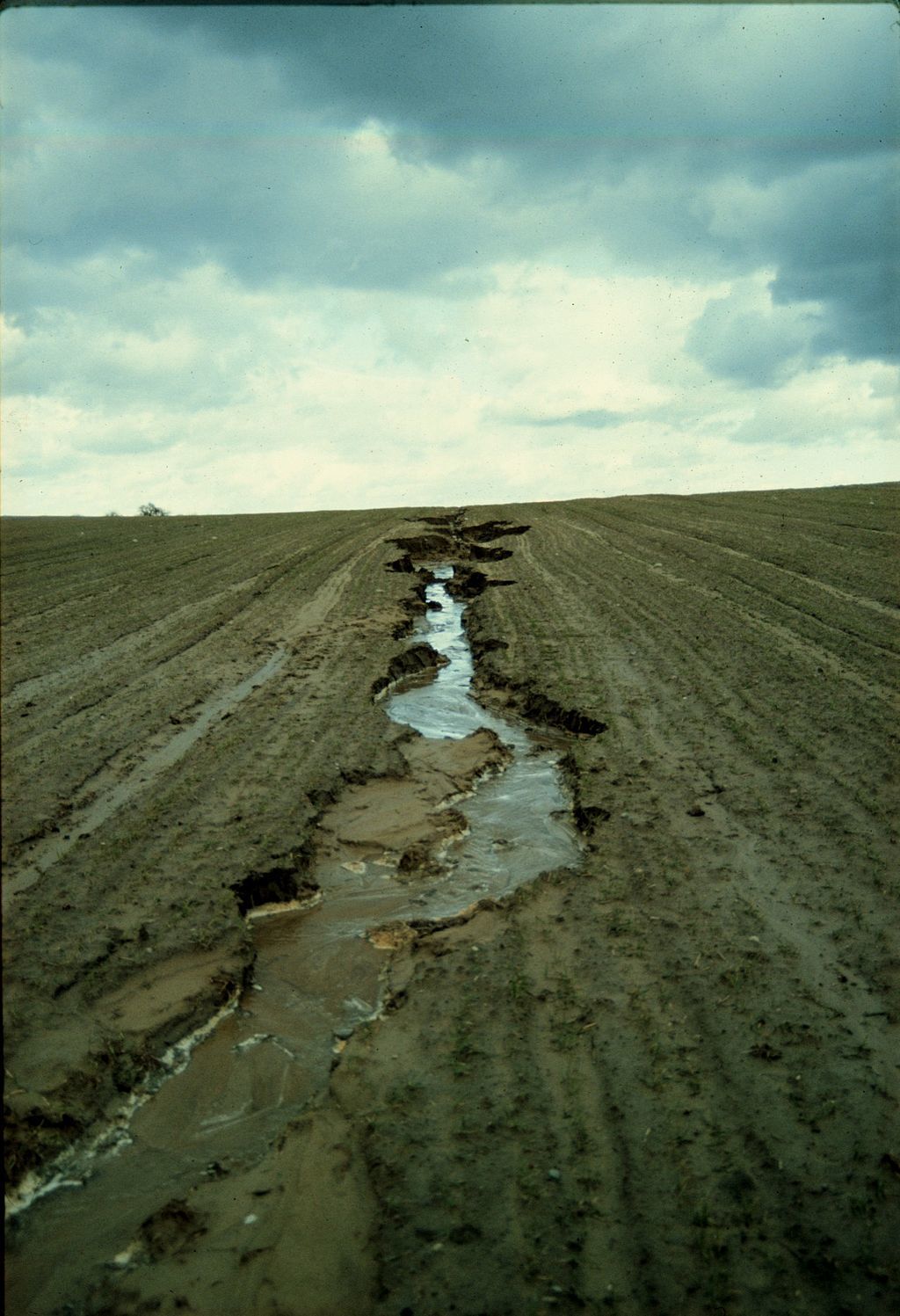
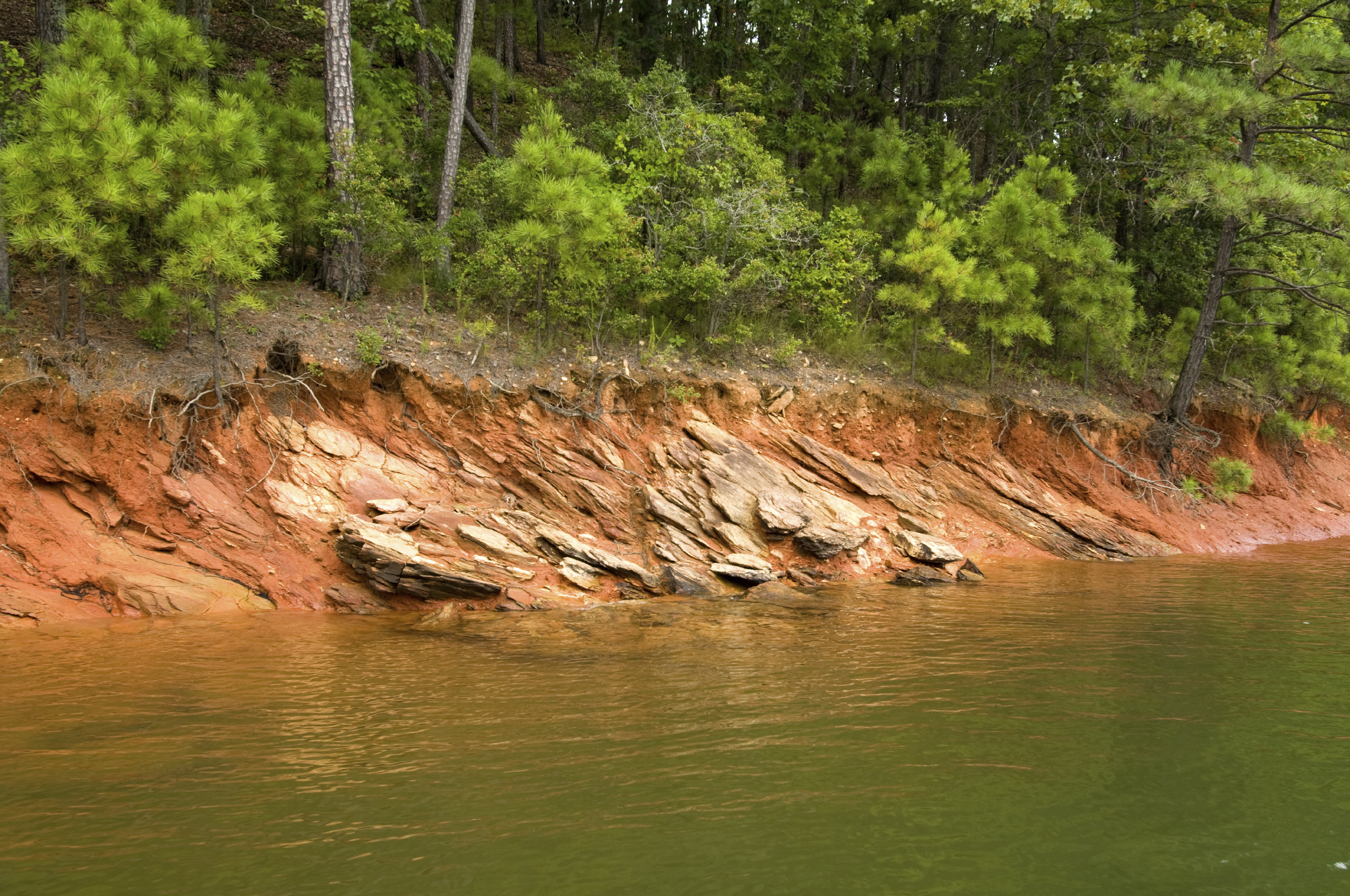
Food Security
Pollinators help produce 1 of every 3 bites of food we consume. Nearly $217 billion in agricultural productivity are contributed by pollination services and between $1.2 and $5.4 billion are from honey bees alone. Farming for and producing vegetables at home is a cheap and sustainable method of finding sustenance for individuals who may not otherwise have access to a complete and healthy diet. Food security is assurance that an individual has a sufficient supply of food and sustenance rather than uncertainty regarding their next meal. A simple bowl with tomatoes, broccoli, beans and cucumbers would not be possible without the existence of pollinators! Without pollinators, the amount of food our agricultural system can produce would be greatly diminished.
https://www.pollinator.org/pollinators
https://www.pollinator.org/bff
https://www.usda.gov/topics/food-and-nutrition/food-security
https://www.ecpa.eu/sites/default/files/Pollinators%20brochure_B%C3%A0T2.pdf
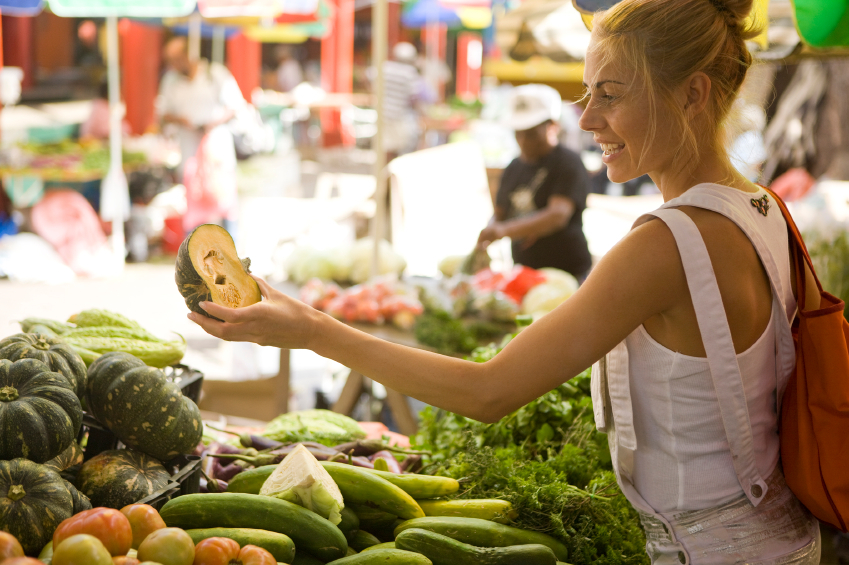

Nutrient Cycling
Nutrient cycling is an essential process in all ecosystems where organic and inorganic matter are used and recycled in the environment to produce life. Pollinators and their forage plants are each involved in many nutrient cycles as they consume nutrients from the soil and release them back into the environment. Nutrients such as carbon, nitrogen, sulfur, phosphate, oxygen, and hydrogen are key building blocks that make up world. By filling a critical role in the lifecycles of plants, pollinators play a crucial part in the maintenance of nutrient cycles.
http://mdocs.skidmore.edu/crandallparktrees/ecosystem/nutrient-cycling/
https://www.sciencedirect.com/topics/earth-and-planetary-sciences/nutrient-cycling
https://blogs.ntu.edu.sg/hp331-2014-29/?page_id=14
https://serc.carleton.edu/integrate/teaching_materials/food_supply/student_materials/865
https://www.esf.edu/cue/documents/Bormann-Likens_Nutrient-Cycling_1967_000.pdf
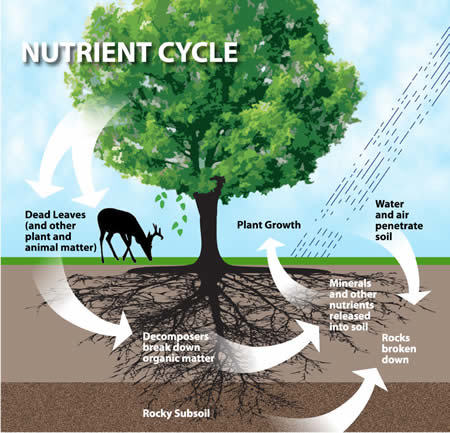
Photo by Amber Barnes.
Raw Materials Production
Raw materials are natural resources that can be processed and used in a variety of ways for the benefit of mankind. Each year, 6 billion tons of biomass from the natural world are used for human needs, including fuels, paper, wood, and others. These raw materials can make up many items we use every day such as cotton fiber, cooking oil (like canola and sesame), herbs, essential oils, cosmetics, and medicines. The plants that these and many others are derived from rely on pollinators.
https://www.sciencedirect.com/science/article/abs/pii/S0926669011000380
https://onlinelibrary.wiley.com/doi/abs/10.1002/9781119951438.eibc2432
https://www.researchgate.net/publication/315955240_Plants_as_raw_materials
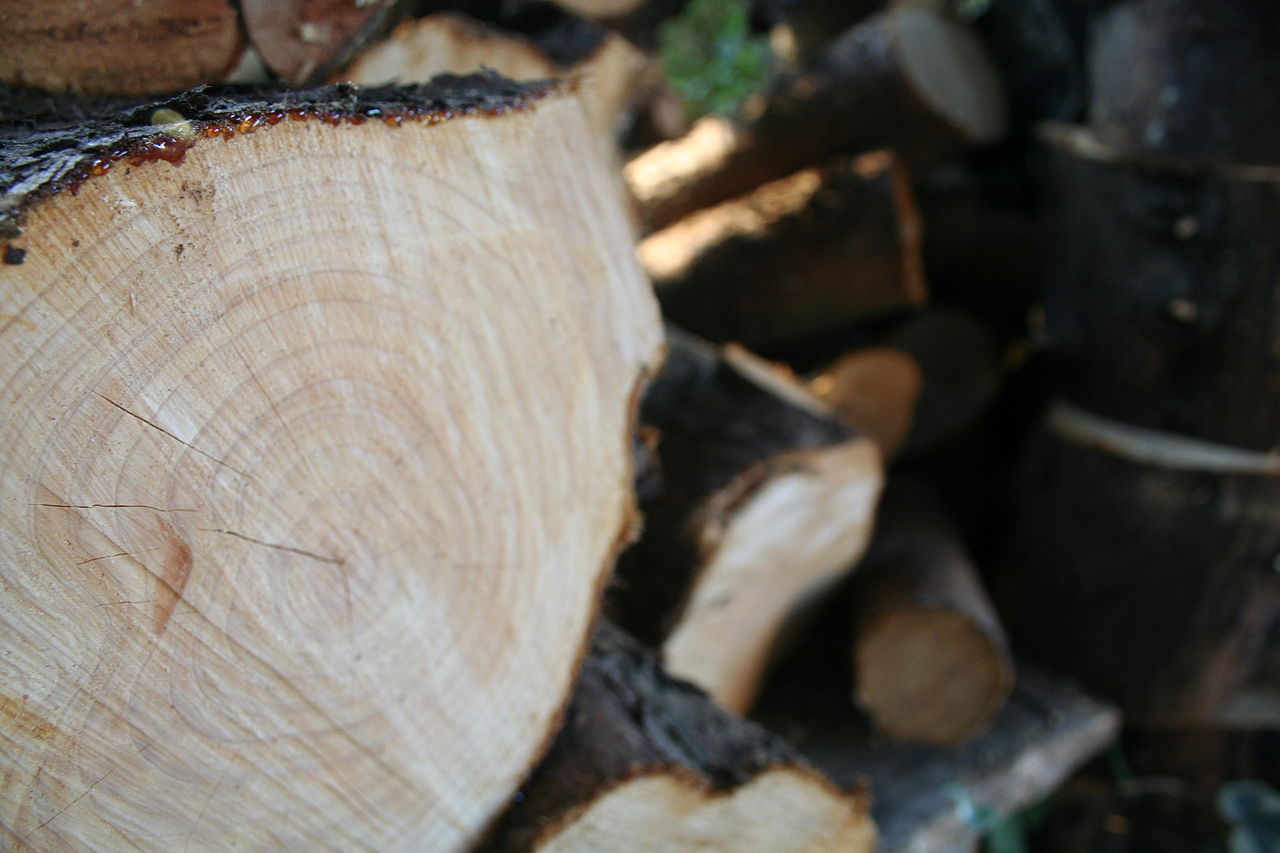

Recreation
Outdoor recreation might include activities like hiking, cycling, fishing, camping, and horseback riding. National and state parks allow hikers to enjoy the beauty of nature while ensuring that the land is protected and the plants and animals that depend on it have adequate space to thrive. Many of the unique and beautiful plant and animal species that make outdoor recreation activities so enjoyable would not be able to exist without the presence of pollinators. Environmentalists and outdoorsmen such as John Muir, Theodore Roosevelt, and Henry David Thoreau advocated for the preservation of wildlife in the United States, helping create the parks system to preserve and make nature available to future generations. Today, many individuals and conservation organizations like Pollinator Partnership continue this effort by celebrating and protecting the pollinators that make it possible.
https://www.wilderness.org/articles/article/outdoor-recreation-faqs
http://www.pbs.org/nationalparks/people/historical/muir/
https://www.thoreausociety.org/life-legacy


Resilient Ecosystems
Ecosystem resilience is the trend for ecosystems to reach equilibrium. If the system is disturbed, a new equilibrium is reached based on the new conditions. The biodiversity supported by pollinators helps create negative feedback loops that keep ecosystems in a state of equilibrium, making it critical to protect pollinators and the plants that they rely on. As biodiversity is slowly lost in an ecosystem, it becomes easier for a disturbance to force the system into a new equilibrium, often making it unable to provide the same ecosystem services it once did.
https://www.nap.edu/read/18387/chapter/5#50
https://www.nap.edu/read/18387/chapter/5
https://www.e-education.psu.edu/geog30/node/398
https://www.sciencedirect.com/topics/earth-and-planetary-sciences/ecosystem-resilience
Photo by Hannu.
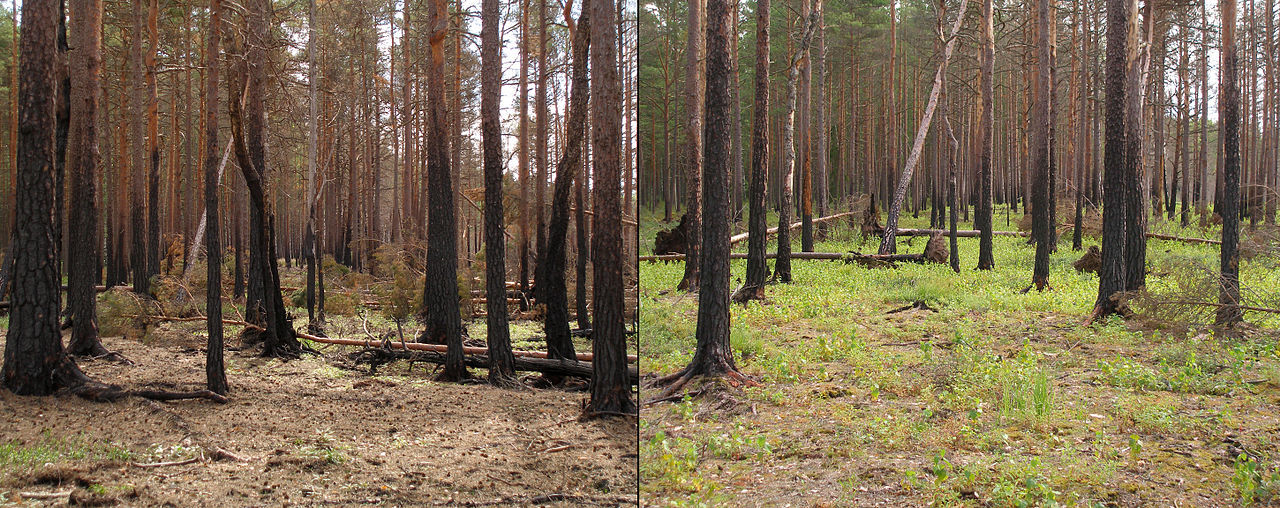
Resources for Wildlife
Pollinators and the plants that they allow to grow provide sustenance and other resources to the other members of the ecosystem. Honey from bees is an example of a key food source for a wide variety of organisms across a huge range of ecosystems. As primary producers, plants provide energy that all living animals must consume in order to survive. If native plants suffer from a lack of pollinators and are outcompeted and replaced by invasive species, other trophic levels will also be affected.
https://www.fs.usda.gov/wildfl...
https://herofortheplanet.org/pollinators/explore/food-web/
https://www.biorxiv.org/content/10.1101/791707v1.full
https://conbio.onlinelibrary.wiley.com/doi/abs/10.1111/j.1523-1739.2008.01129.x
Photo by Alan Vernon.

Photo by GregTheBusker.
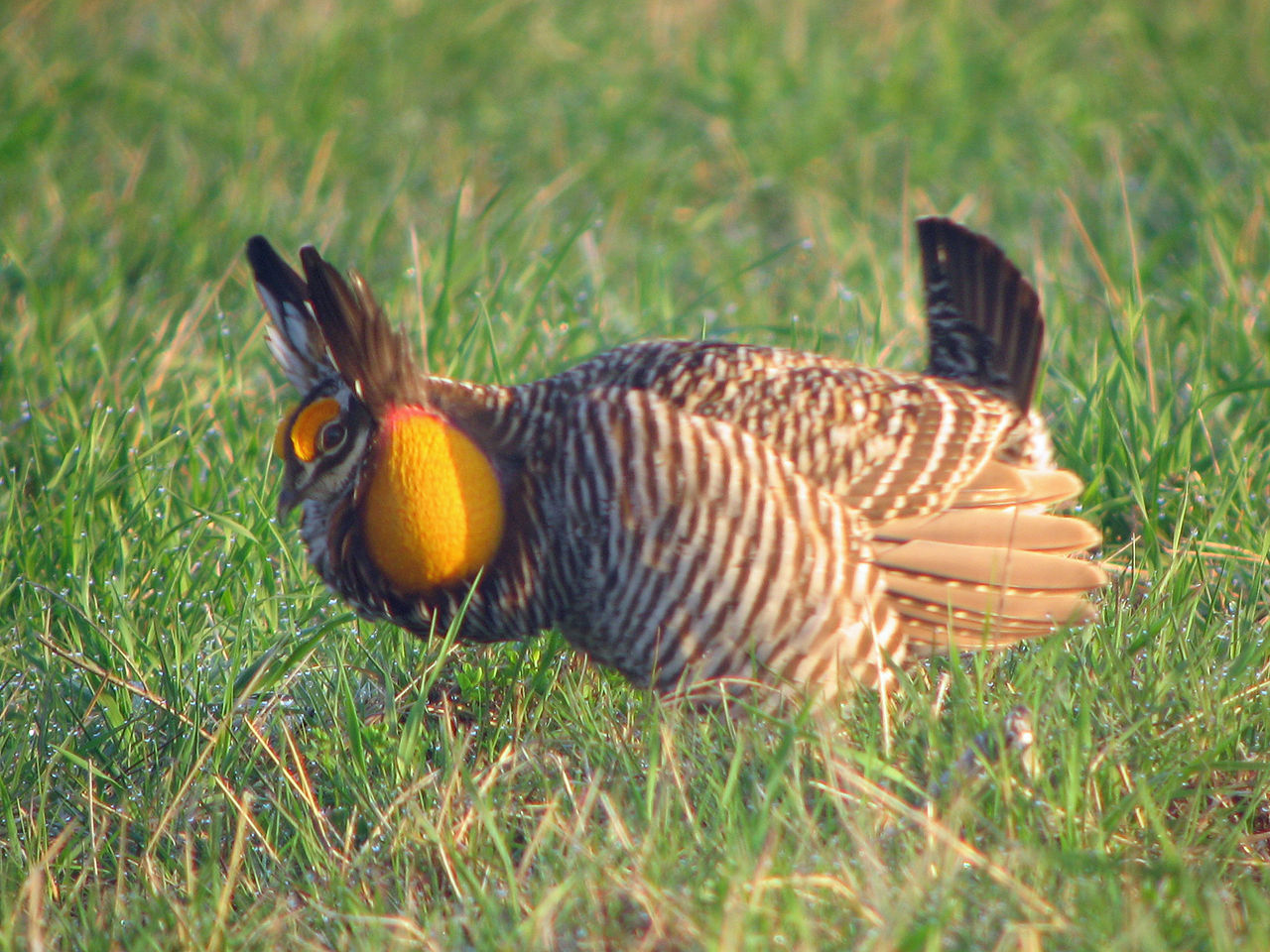
Soil Health
Soil health and stability is especially important because its fertility helps determines the protein health of plants, which helps plats fight against pests and disease. Generations of plants supported by pollinators die and decay, providing the necessary nutrients for the next generation of life. Some plants, like legumes, fix nitrogen and other nutrients from the air, making them accessible in the soil for other organisms. Healthy soil also has balanced populations of microorganisms and larger organisms like earthworms that are critical for the decomposition and breakdown of dead matter, as well as providing other key functions such as detoxification of soil and suppressing dangerous microorganisms that would be harmful to plants, animals, and humans. A decline in the pollinators would lead to less nutrient cycling and less fertile soil. A lack of fertile soil and plant life would render large regions of land essentially unlivable.
https://www.sciencedirect.com/science/article/abs/pii/S0929139300000676
https://www.nrcs.usda.gov/wps/portal/nrcs/main/soils/health/
https://rodaleinstitute.org/why-organic/organic-farming-practices/soil-health/
https://www.smithsonianmag.com/science-nature/soil-has-microbiome-too-180960088/
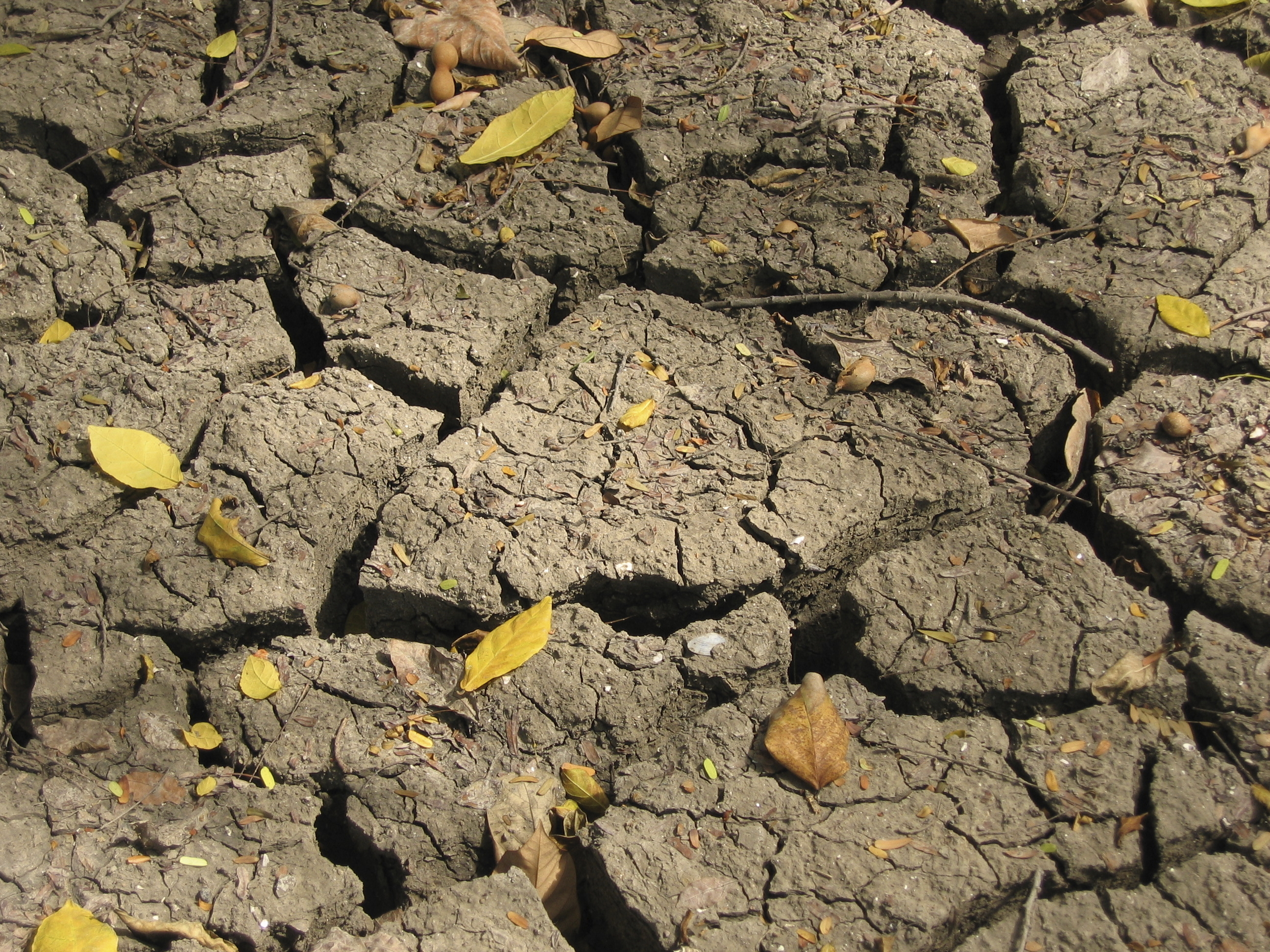
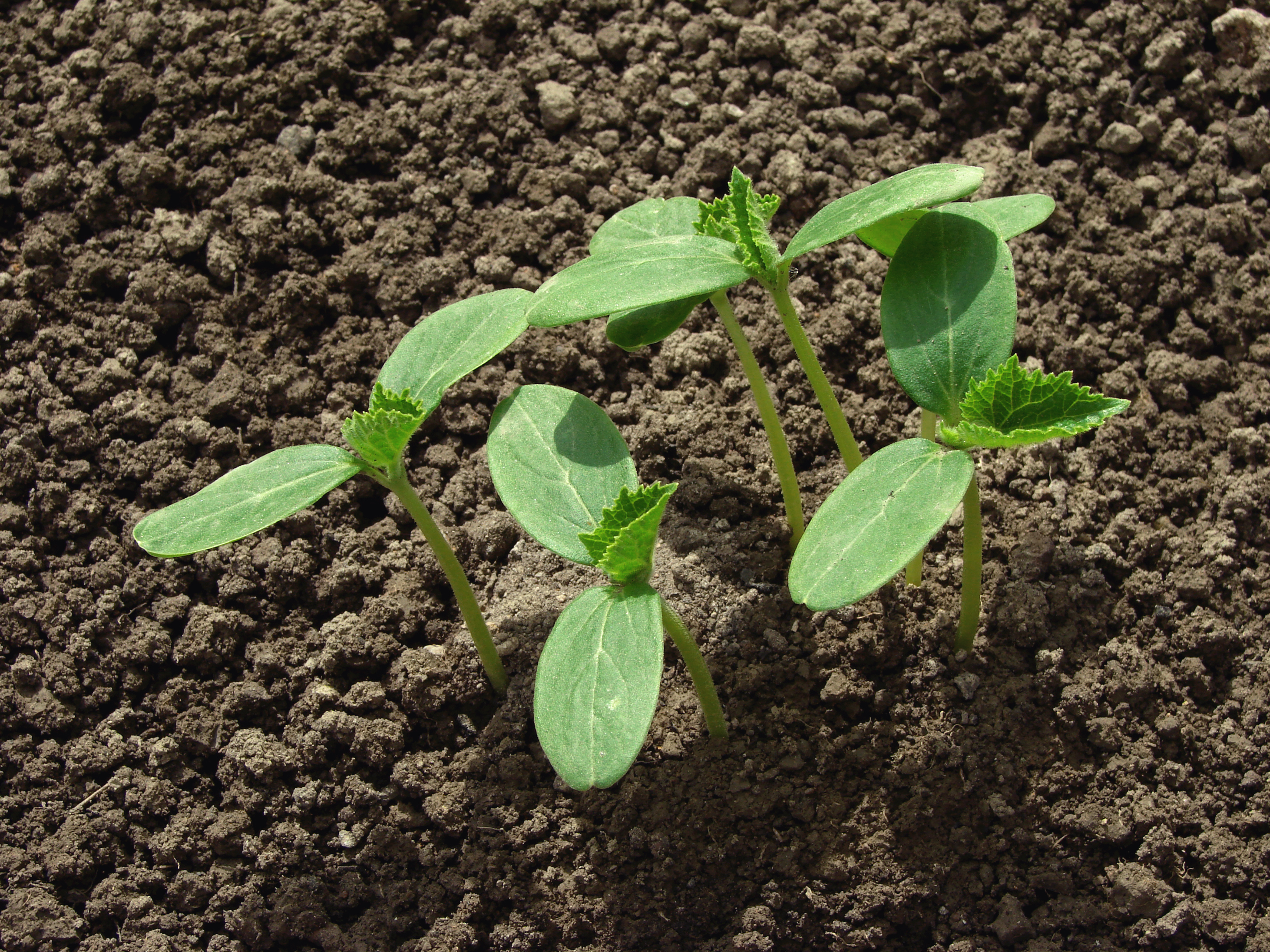
Water Filtration
Water is perhaps the most significant natural resource that is critical for life. Water filtration is the removal of harmful solutes and microorganisms from water supplies in nature. This process is often performed by artificially constructed facilities in order to provide our cities and towns with safe and potable water, but many of the plants that rely on pollinators also play a key role in removing contaminants like heavy metals, inorganic and organic solids, as well as a wide variety of bacteria from water. This process helps cleanse the water and make it safe for the fish and microorganisms that live in the water as well as the terrestrial animals and humans that drink the water. If pollinators continue to decline and the plants that rely on them for reproduction begin to disappear, then the biodiverse organisms that have evolved alongside them and grown to rely on their ability to cleanse the water would suffer the consequences.
https://www.sciencedirect.com/science/article/pii/B9780124050709500244
https://sciencing.com/do-wetlands-purify-water-7585568.html
https://www.jstor.org/stable/4065012?seq=1
https://berkeleysciencereview.com/article/natures-water-filter/
Photo by Judy Biss.
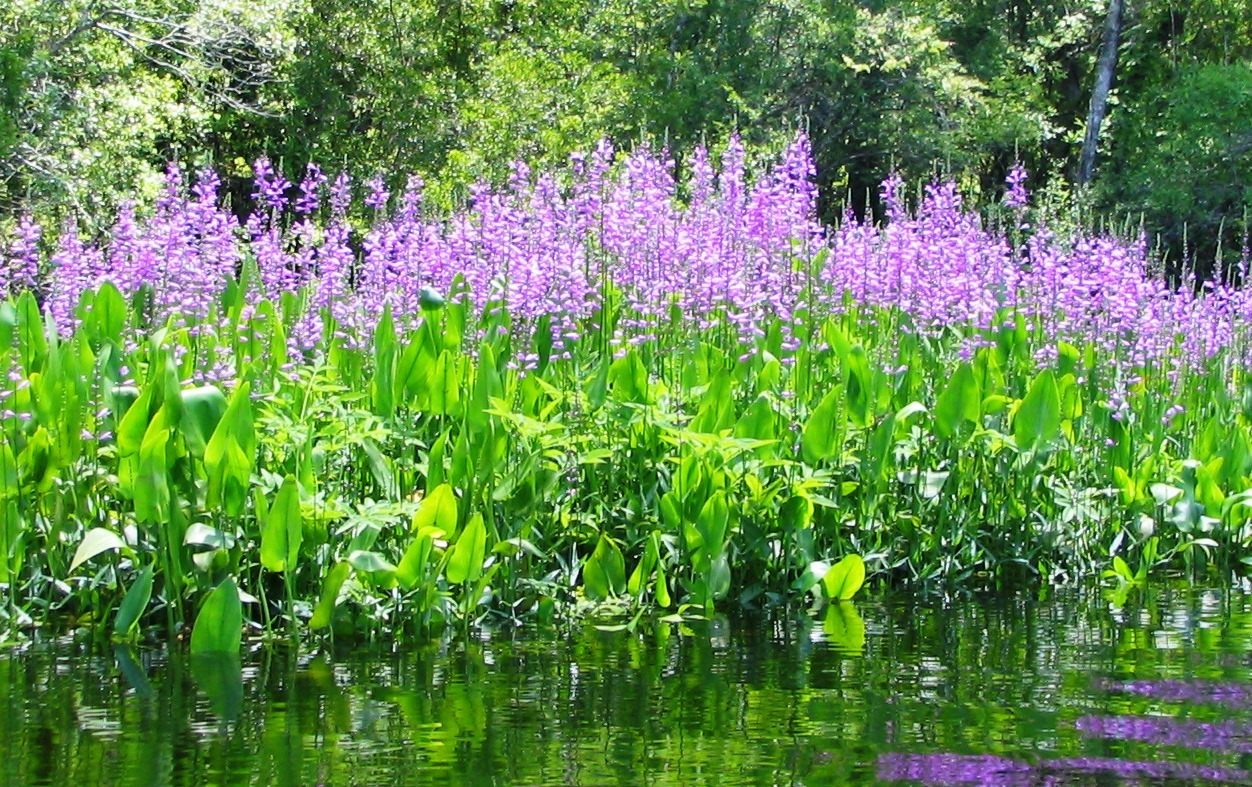
Photo by Tony Hisgett.
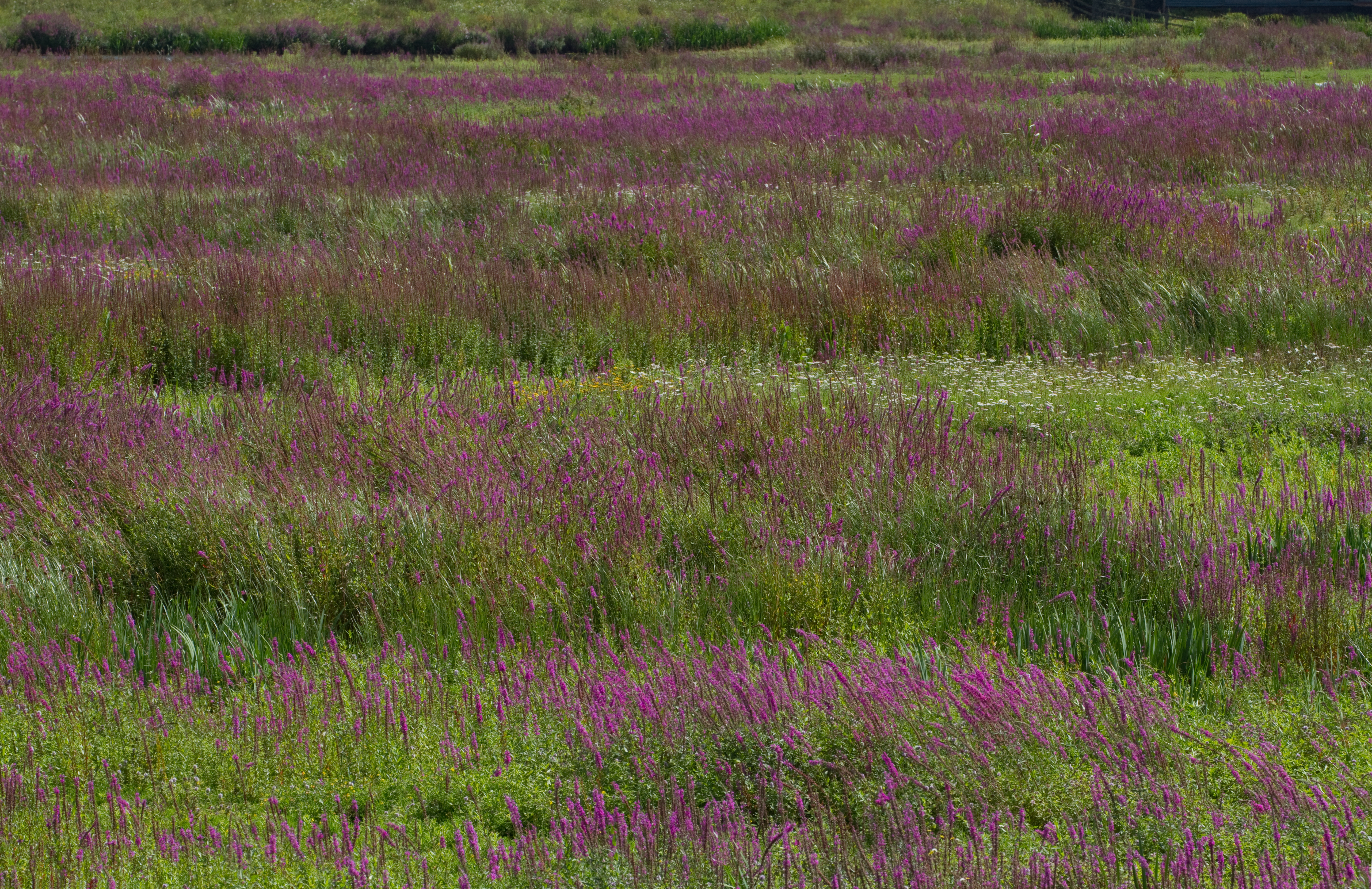
The Pollinators
Lesser Long-Nosed Bat (Leptonycteris curasaoae yerbabuenae)
The lesser long-nosed bat is a migratory bat native to the Sonoran Desert of the southwestern United States and northwestern Mexico. It feeds on nectar, typically from cacti during their brief periods of bloom by using its elongated muzzle and tongue as long as its body to reach into the flowers of large succulents like the saguaro cactus (Carnegiea gigantea), organ-pipe cactus (Stenocereus thurberi), agaves (Agave spp.), and Cardón (Pachycereus pringlei), covering its head with pollen in the process. Its migration coincides with the bloom of these important nectar sources, helping maintain desert ecosystems. These bats live in large colonies of thousands of individuals and spend the daytime resting in caves and mines.
Photo by Merlin D. Tuttle.
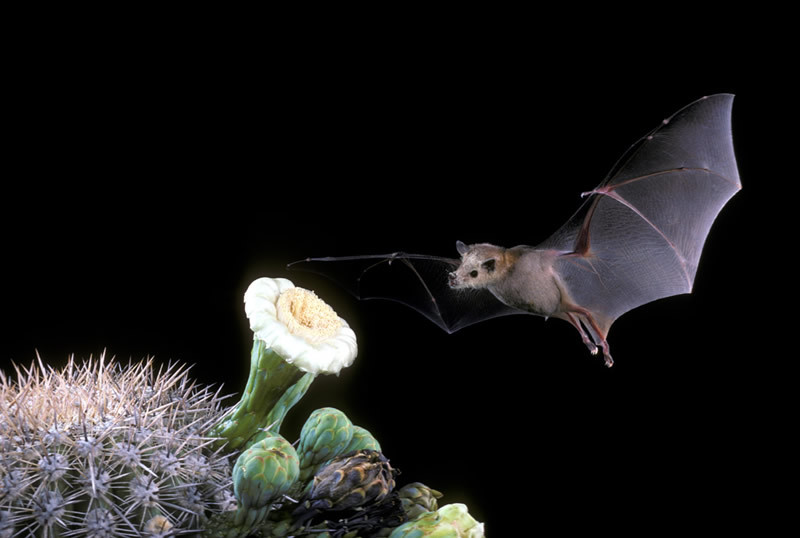
Photo by Merlin D. Tuttle
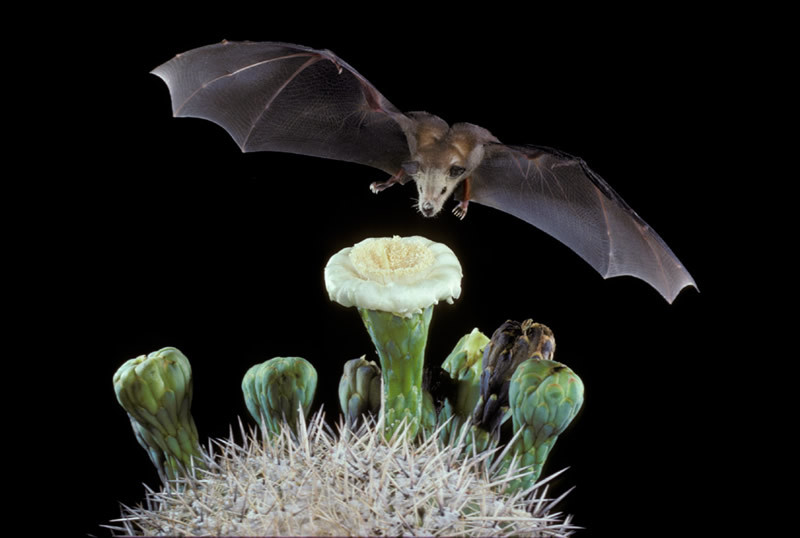
Geographic Distribution: Sonoran Desert in the southwestern United States and northwestern Mexico.
Habitat: Desert scrub, desert grassland, other arid and semi-arid regions, and high elevations in mountain woodlands further south.
Identification: Coloration is yellow-brown or cinnamon gray; undersides are usually rusty brown. Its body and tongue are each 3” long; wingspan is 10”; noseleaf, tail, and ears are small.
Plants Commonly Visited: Carnegiea gigantea, Stenocereus thurberi, Agave spp., Pachycereus pringlei.
NatureServe Conservation Status: G3 Vulnerable overall; S3 Vulnerable in New Mexico, S2 Imperiled in Arizona, S1 Critically Imperiled in California.
https://www.fs.usda.gov/wildfl...
https://animaldiversity.org/accounts/Leptonycteris_yerbabuenae/
http://www.batcon.org/resources/media-education/species-profiles/detail/2432
https://www.nps.gov/articles/lesser-long-nose-bat.htm
https://www.fws.gov/pollinators/Features/Lesser_long-nosed_bat.htm
https://www.nationalgeographic.com/animals/mammals/l/lesser-long-nosed-bat/
https://www.desertmuseum.org/kids/oz/long-fact-sheets/lesser%20long%20nose%20bat.php
https://explorer.natureserve.org/Taxon/ELEMENT_GLOBAL.2.106286/Leptonycteris_yerbabuenae
Pure Golden Green Sweat Bee (Augochlora pura)
The Pure Golden Green Sweat Bee is a visually striking bee native to the eastern portions of Canada and the United States. It is a generalist pollinator known to visit more than 20 plant families, allowing it to forage into November. A few important nectar sources include the Asteracae and Rosacae families early in the season and milkweeds, hydrangeas, spiderwort, verbena, and others later in the season. Unlike many other sweat bees that nest in holes in the ground, this bee nests under the loose bark of old and fallen trees using mud and debris. It gathers nectar and pollen from flowers to deposit in its nest until it has enough to feed a single larva. Then, it lays an egg in the nest and seals it with an impermeable membrane until the offspring is mature enough to emerge.
Photo by Beatriz Moisset.
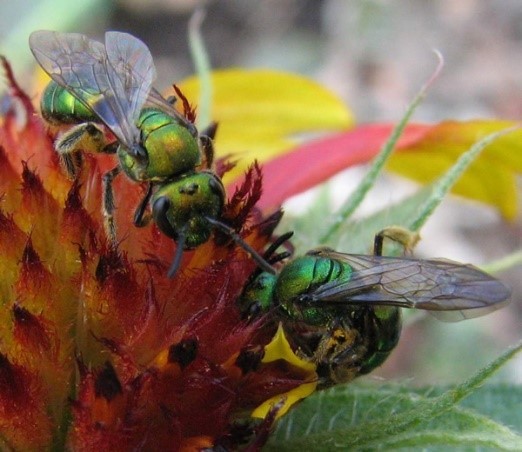
Photo by Beatriz Moisset.
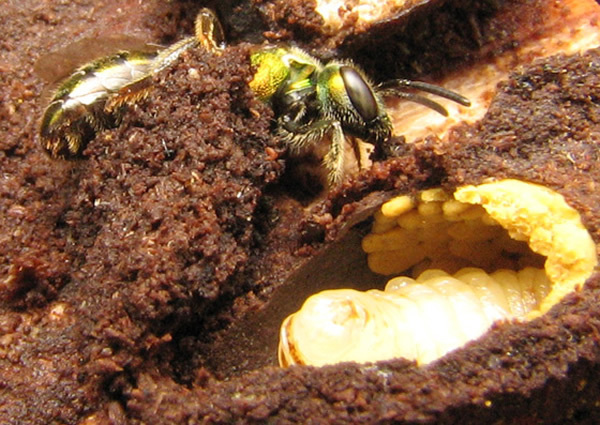
Geographic Distribution: Canada to Florida; from Maine and Quebec in the east to Minnesota in the west, and south to Texas and Florida.
Habitat: Wooded areas with fallen logs, suburban wood piles, and adjacent fields and prairies.
Identification: Striking, iridescent green to gold or bluish to purple in coloration; mandibles are yellow in males. Body is 6-9mm long.
Plants Commonly Visited: Asteraceae, Rosaceae, Aceraceae, and many others; proposed to be a pollinator of walnut.
NatureServe Conservation Status: G5 Secure.
https://www.fs.usda.gov/wildfl...https://bugguide.net/node/view/79292
http://entnemdept.ufl.edu/creatures/MISC/BEES/Augochlora_pura.html
https://www.discoverlife.org/20/q?search=Augochlora+pura
https://explorer.natureserve.org/Taxon/ELEMENT_GLOBAL.2.882078/Augochlora_pura
Two Form Bumble Bee (Bombus bifarius)
The two form bumble bee is a common bee found across western North America, predominantly found in the United States. There are 2 forms of this bee with different colorations (dark vs red thorax hairs). Like other species, queens emerges in early spring and produce waves of workers and males over the following months before hibernating or dying out in the winter. Nests are usually made underground.
Photo by wenatcheeb.
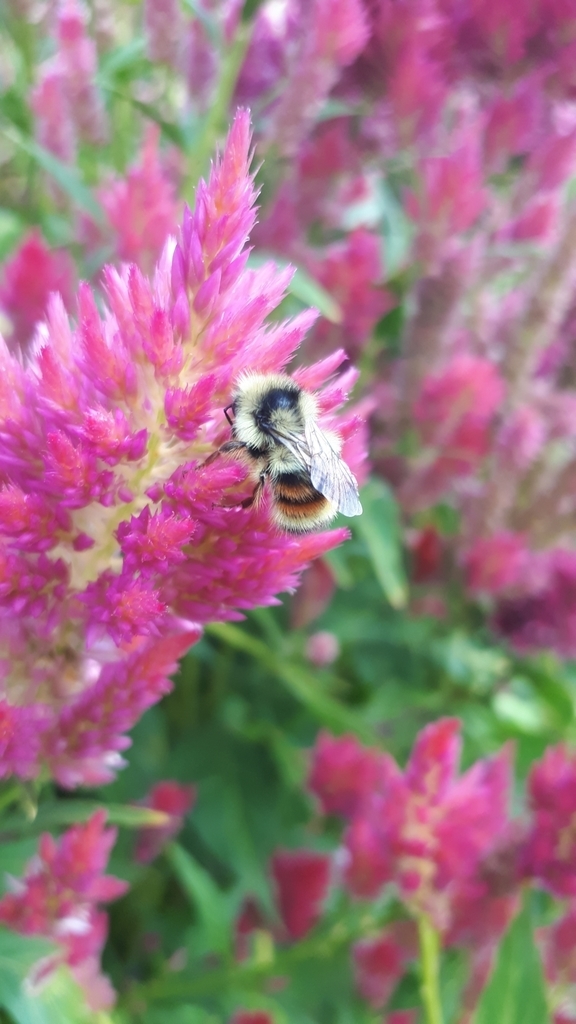
Photo by John D. Reynolds.
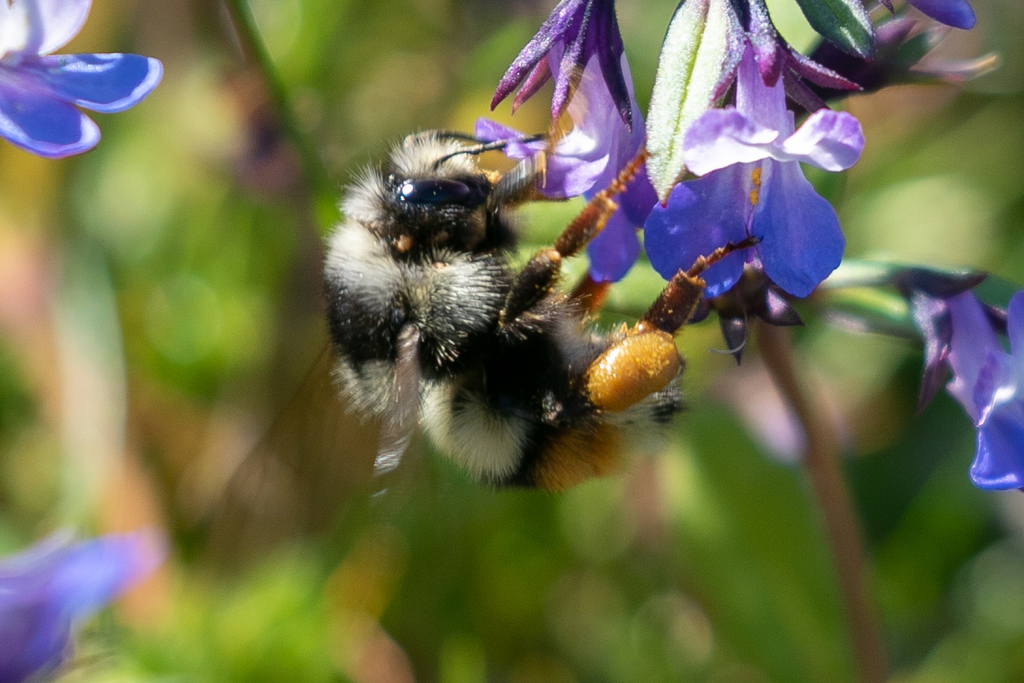
Photo by adams04.
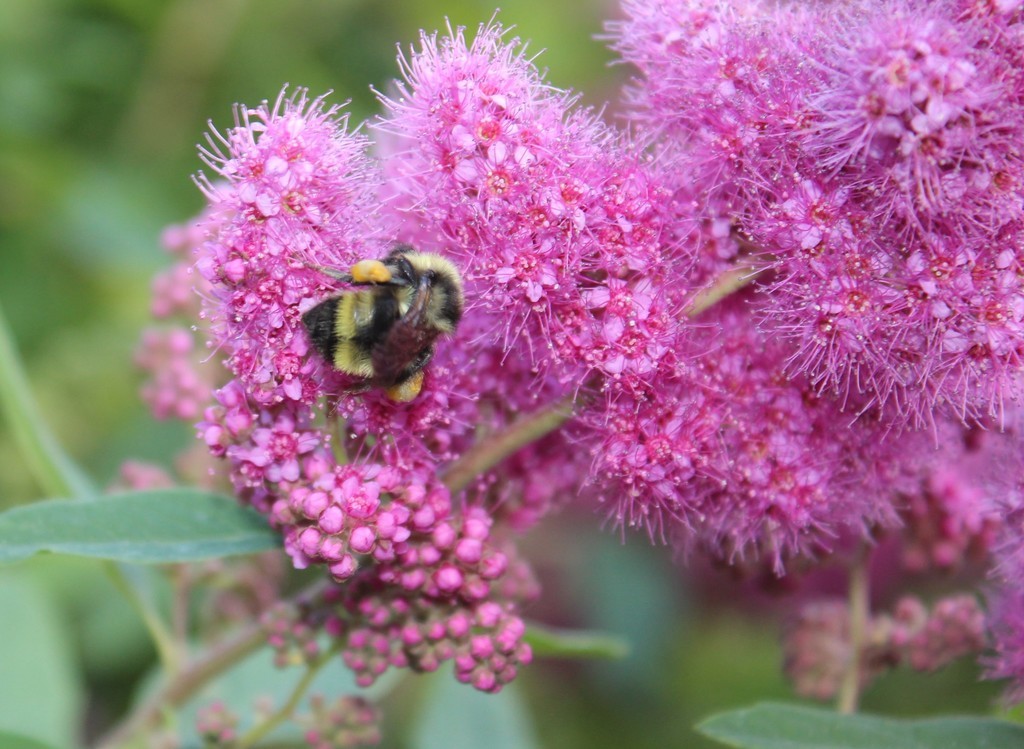
Geographic Distribution: From the Pacific coast to the western Great Plains and Black Hills of South Dakota; from northern Mexico to southern Alaska; a dark form (B. bifarius nearcticus) in the north and west; a red form (B. bifarius bifarius) found in the south and east of the range.
Habitat: Grasslands, riparian woodland, chaparral, urban areas, mountain meadows, and alpine tundra.
Identification: Black and yellow stripped bumble bee with the more patch of black hairs on the thorax; alternately, these black hairs can be reddish colored stripes. Queens are 15-19mm long and workers and males are 8-14mm long. Outer surface of hind legs form orange to brown colored pollen baskets.
Plants Commonly Visited: Melilotus, Lupinus, Achillea, Senecio, Chrysothamnus, Cirsium, and many others.
NatureServe Conservation Status: G5 Secure overall; S3 Vulnerable in Alaska.
http://fieldguide.mt.gov/speciesDetail.aspx?elcode=IIHYM24070
https://bugguide.net/node/view/184373
https://explorer.natureserve.org/Taxon/ELEMENT_GLOBAL.2.120623/Bombus_bifarius
Locust Borer Beetle (Megacyllene robiniae)
The locust borer is easily identified by black and yellow “W” colored wings. These borers lay their eggs in cracks of the bark of black locust trees (Robinia pseudoacacia) during the fall, and the larvae bore down into the inner bark to overwinter, then burrowing into the center of underlying branches to feed during early spring. Because larvae have dark, round heads, this insect is sometimes referred to as the roundheaded borer. The boring process can damage the trees by cutting off their nutrients and water supplies, leading many to protect their ornamentals with insecticides. Although adult borers do not have to feed, they often visit and pollinate goldenrod.
Photo by Paweł Pieluszyński.
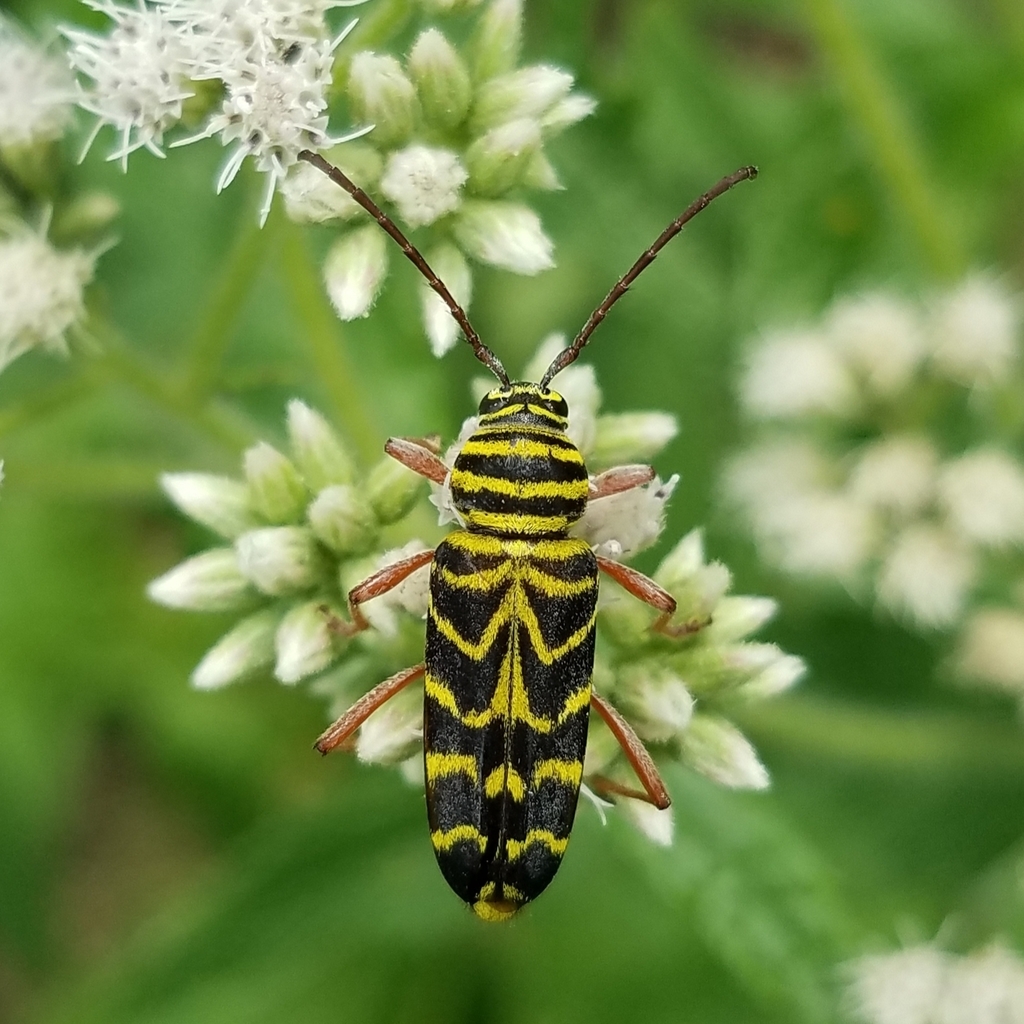
Photo by Paweł Pieluszyński.
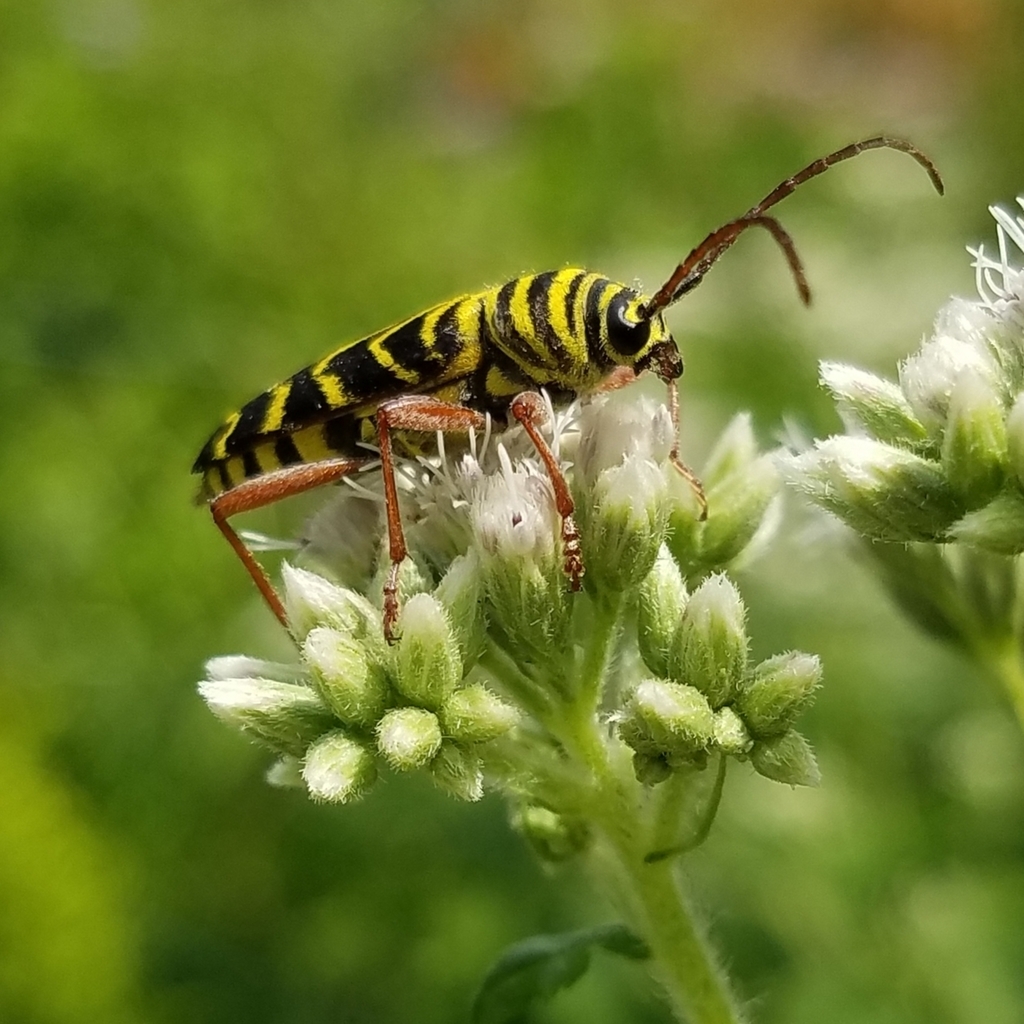
Geographic Distribution: Endemic to eastern North America, but now commonly found wherever black locust is grown.
Habitat: Occurs throughout the range of black locust.
Identification: Adults are black with yellow banding; the 3rd band on the wings is “W” shaped; legs are reddish; antennae are black. Larvae are white with a dark head capsule; pupae are yellow. Adults and larvae are both up to 1” long.
Plants Commonly Visited: Solidago spp., it is considered a pest for its host plant, Robinia pseudoacacia.
NatureServe Conservation Status: G5 Secure.
http://entomology.wsu.edu/outreach/bug-info/locust-borer/
http://entoweb.okstate.edu/ddd/insects/locustborer.htm
https://www.pubs.ext.vt.edu/content/dam/pubs_ext_vt_edu/ENTO/ENTO-141/ENTO-141-pdf.pdf
https://explorer.natureserve.org/Taxon/ELEMENT_GLOBAL.2.747358/Megacyllene_robiniae
Ruby-Throated Hummingbird (Archilochus colubris)
The ruby-throated hummingbird has the most breeding range of any hummingbird. This species migrates from its summer breeding grounds in the eastern United States and southern Canada to tropical regions in Mexico and Central America. On the way, it will fly up to 500 miles nonstop over the Gulf of Mexico. Its weight will nearly double from 3.25g to 6g before the flight. To accomplish this, it feeds on the nectar from wildflowers such as trumpet honeysuckle (Lonicera sempervirens), red columbine (Aquilegia canadensis), lemon beebalm (Monarda citriodora) and wild bergamont (Monarda fisulosa) among others along its migration route, as well as spiders and small insects.
Photo by Dick Daniels.
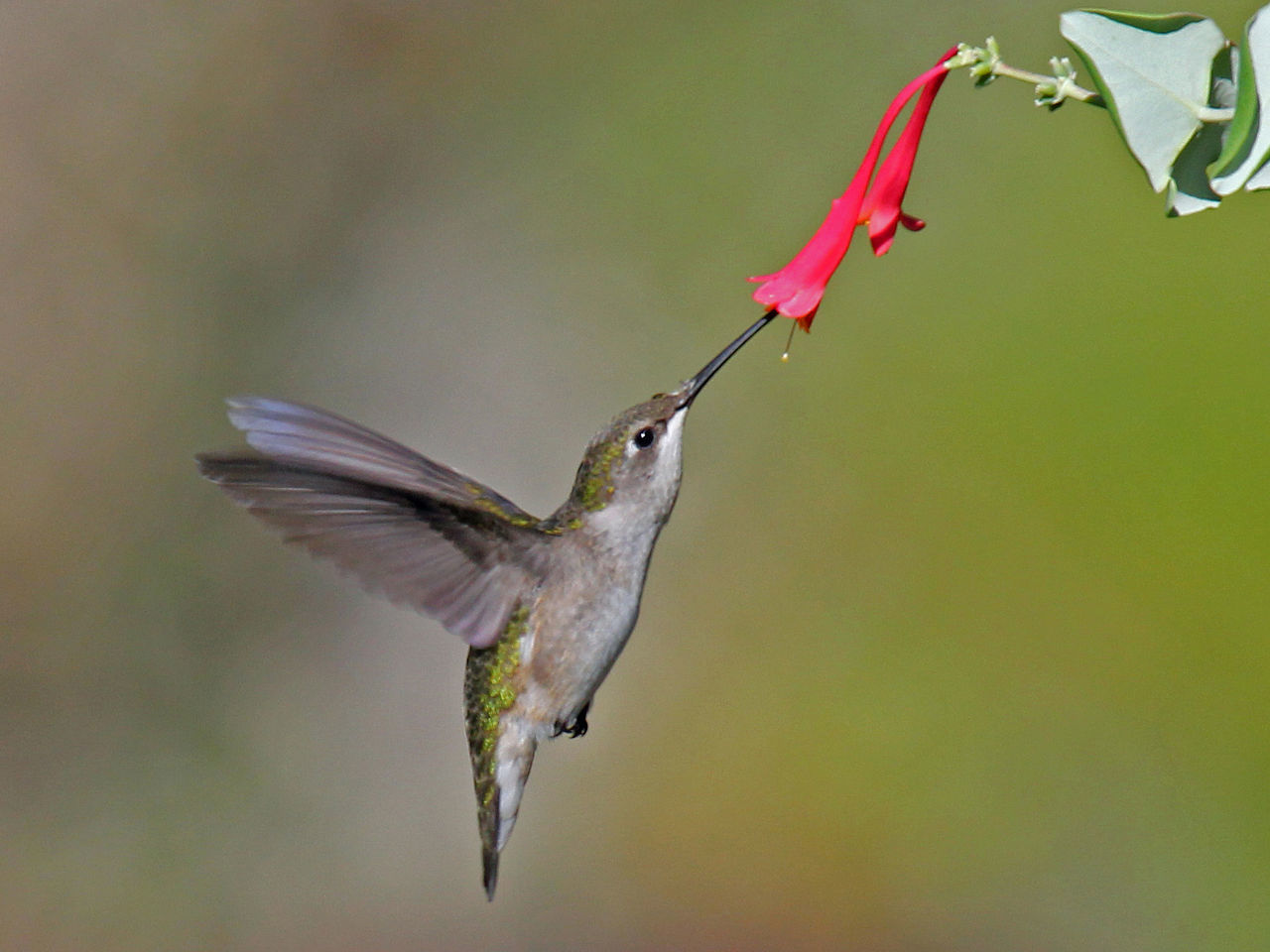
Photo by Joseph M. Schneid.
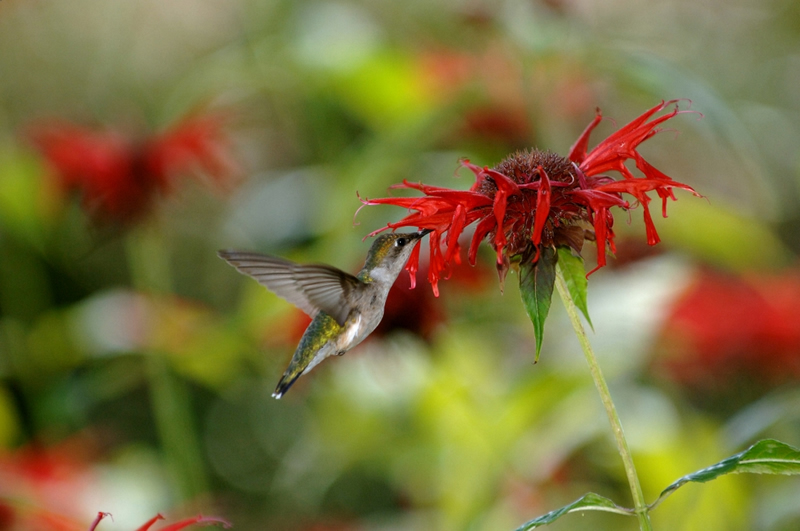
Geographic Distribution: Ranging from southern Canada to as far south as the Panama Canal; east of the 100th meridian in the United States.
Habitat: Deciduous forests, pine forests, and forest edges; tropical deciduous forests and forest edges in the winter. Also found along rivers, marshes, and in fields.
Identification: Up to 3 ½” long. Males have a green back, an iridescent ruby colored throat, gray underside with a forked tail; females have a green back, white breast and throat, and a rounded tail. Females are larger than males, with a longer bill.
Plants Commonly Visited: Aesculus pavia, Aquilegia canadensis, Campsis radicans, Ipomea coccinea, Lonicera sempervirens, Lonicera canadensis, Lobelia cardinalis, Silene, Silene virginica, Monarda fisulosa, Monarda citriodora, and others.
NatureServe Conservation Status: G5 Secure overall; S3 Vulnerable in British Columbia and Nebraska, S2 Imperiled in South Dakota.
https://www.fs.usda.gov/wildfl...
https://animaldiversity.org/accounts/Archilochus_colubris/
https://www.plants.usda.gov/pollinators/Ruby-throated_hummingbird.pdf
http://www.hummingbirds.net/rubythroated.html
https://explorer.natureserve.org/Taxon/ELEMENT_GLOBAL.2.105069/Archilochus_colubris
Eastern Tiger Swallowtail (Papilio glaucus)
Known for its broad yellow wings and tiger looking bands, the beautiful eastern tiger swallow butterfly is the state butterfly of Alabama, Delaware, Georgia, and South Carolina. It can be found anywhere east of the Mississippi river and into the Great Plains states. This butterfly lives in almost any habitat, such as woodlands, creeks, roadsides, and many more. It is an especially important pollinator for the flame azalea (Rhododendron calendulaceum) in the Appalachian Mountains, because of its large wingspan that can reach the flower’s widely separated anther and stigma.
Photo by louiseinva.
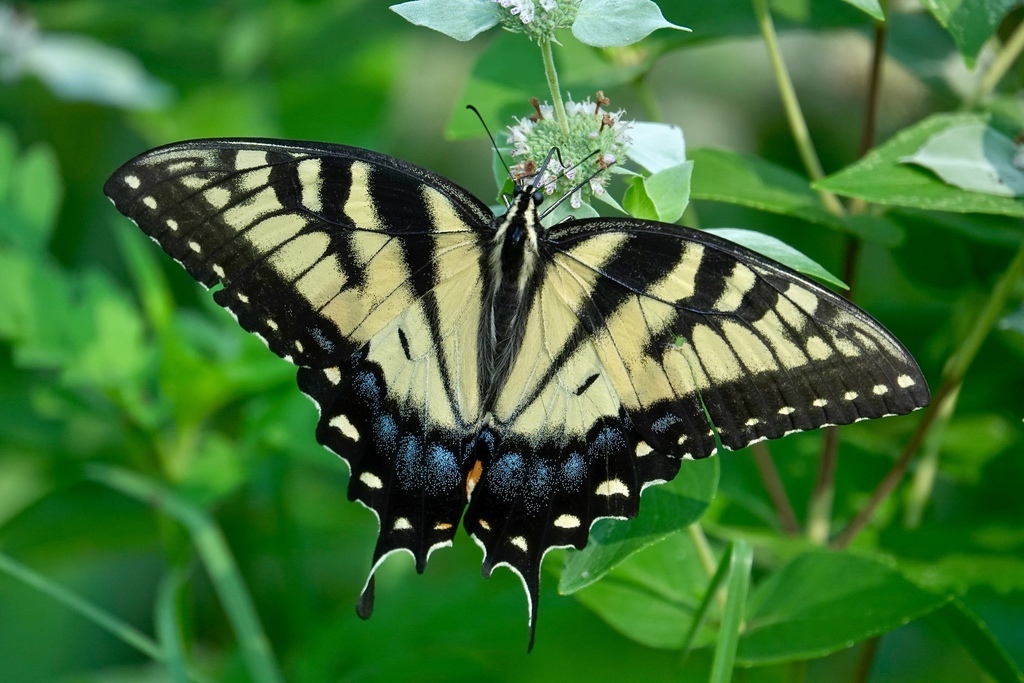
Photo by brookesmith.
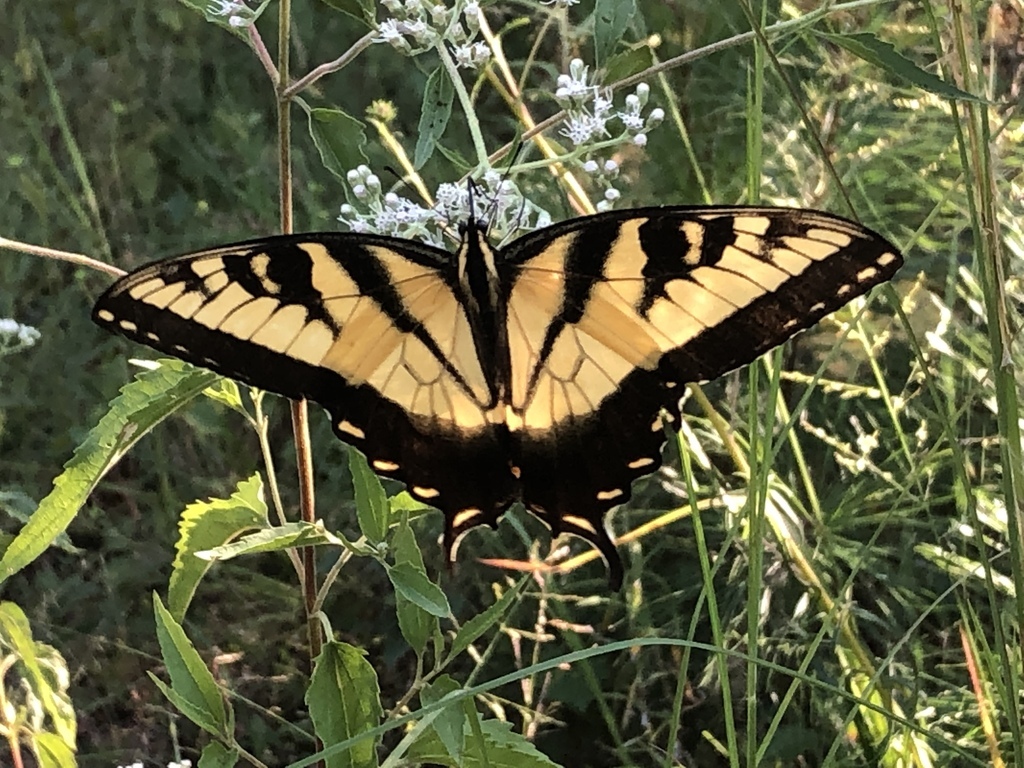
Geographic Distribution: Eastern United States, from the Great Lakes to New England, and south to Texas and Florida.
Habitat: Deciduous woodlands, rivers, swamps, roadsides, gardens, and fields.
Identification: Males and females both have yellow wings with 4 black bands and a prominent orange marginal spot on the hindwing; females can also be black with fainter stripes, and both female forms have iridescent blue chevrons on the interior hindwing. Wingspan up to 4 ½”.
Plants Commonly Visited: Rhododendron calendulaceum, Liriodendron tulipifera, Magnolia virginiana, and Prunus serotina among others.
NatureServe Conservation Status: G5 Secure.
https://awbury.org/2018-year-pollinator/year-pollinator-series-june-eastern-tiger-swallowtail/
https://www.butterfliesandmoths.org/species/Papilio-glaucus
http://entnemdept.ufl.edu/creatures/bfly/tiger_swallowtail.htm
https://animaldiversity.org/accounts/Papilio_glaucus/
https://explorer.natureserve.org/Taxon/ELEMENT_GLOBAL.2.120967/Papilio_glaucus
The Plants
Saguaro Cactus (Carnegiea gigantea)
The Saguaro Cactus is a large cactus native to the Sonoran desert of the Southwestern United States and Mexico. It can live 150-250 years, grow up to 50 ft. tall, and weigh up to 9 tons. The cactus provides important perching and nesting sites for Red-tailed Hawks (Buteo jamaicensis); and nesting cavities for other birds including Gilded Flickers (Colaptes chrysoides), Gila Woodpeckers (Melanerpes uropygialis), Elf Owls (Micrathene whitneyi), and Purple Martins (Progne subis). It also provides nectar for species of migrating bats such as Lesser Long-nosed Bats (Leptonycteris curasoae yerbabuena) and Mexican Long-tongued Bats (Choeronycteris mexicana), and diurnal creatures like wasps, bees, butterflies, and birds during the brief periods each morning the cactus flowers bloom before closing in the afternoon sun. It produces fruit that is common sustenance for many desert dwelling animals.
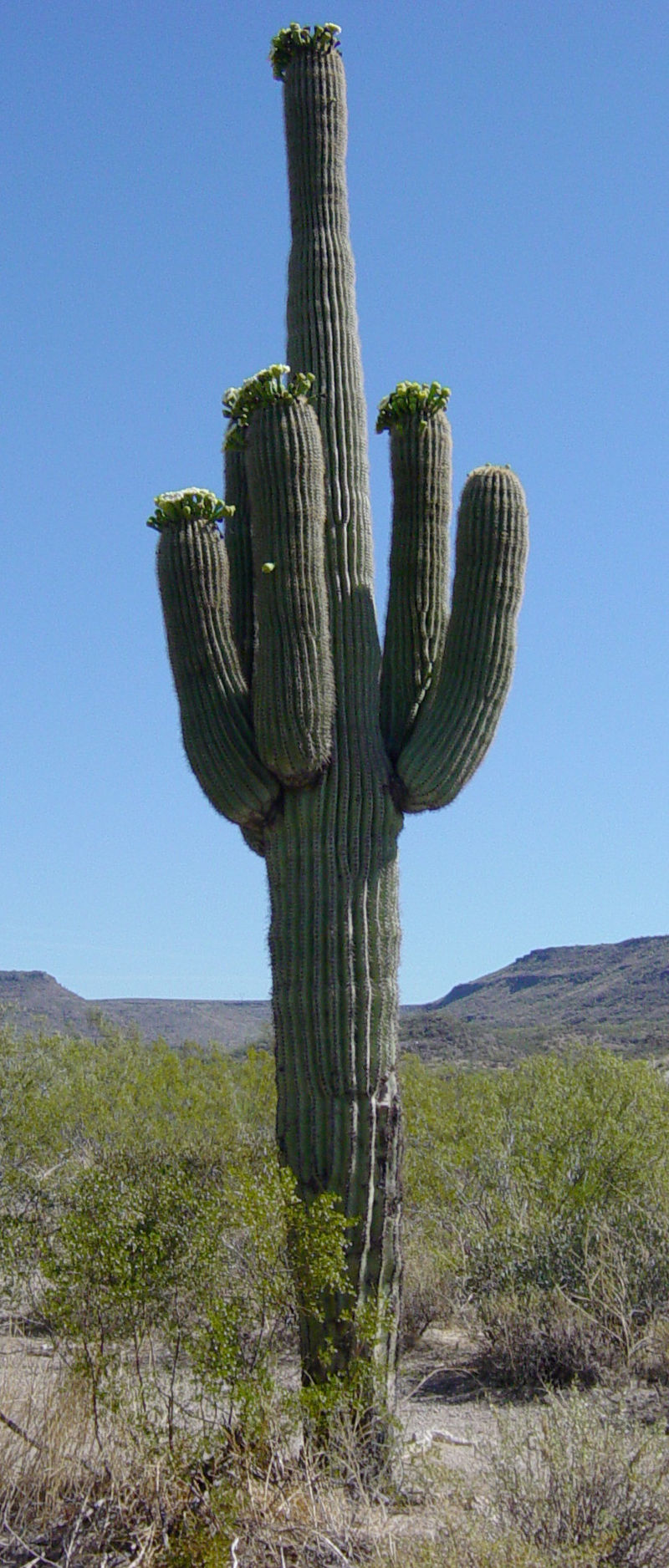
Photo by Charlie McDonald.
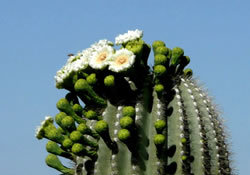
Photo by Saguaro Pictures.
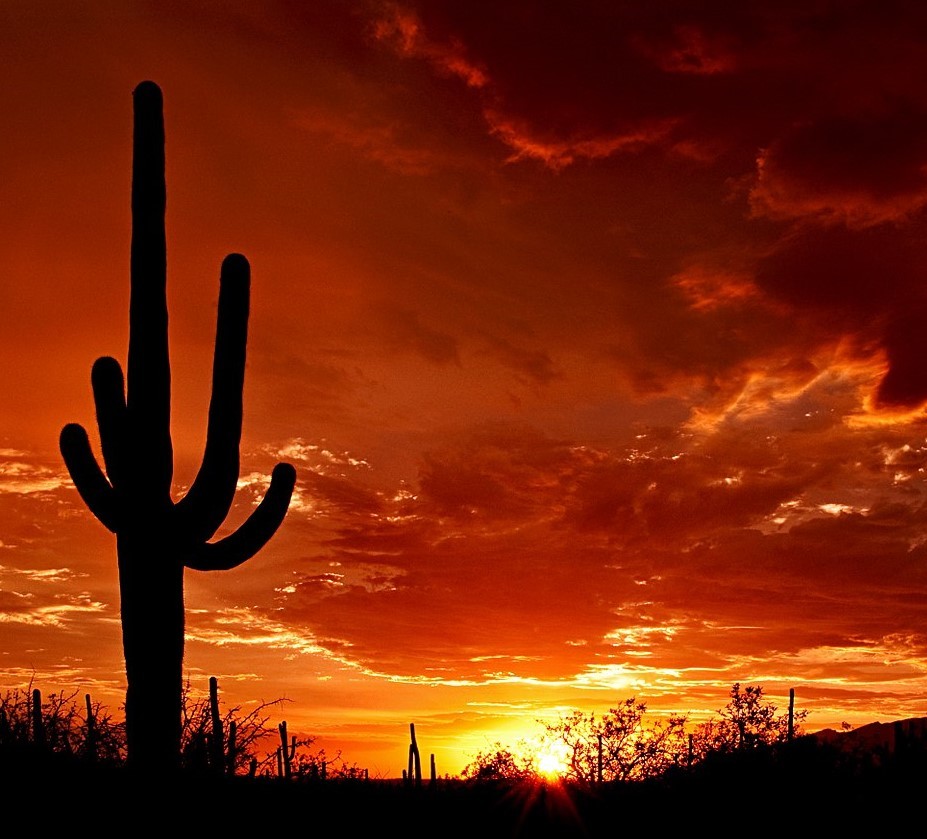
Geographic Distribution: The largest population of saguaro is in the Sonoran Desert of Mexico, while the northernmost extent of its range is the Hualapait Mountains in Arizona and the Colorado River in California.
Habitat: Rocky foothills, canyons, washes, sandy or gravelly desert plains, and other rocky soils that allow its large, 3 ft. tap root and extensive lateral roots to anchor well.
Identification: Large succulent stems are simple with many prominent ribs and one to five lateral, erect branches. Armed with spines up to 3 in. long. Flowers bloom nocturnally, occur at the ends of branches, and are 3.5-5 in. long. Fruit contains up to 2,500 seeds.
Common Pollinators: Leptonycteris curasaoae yerbabuenae, Choeronycteris Mexicana, Zenaida asiatica.
NatureServe Conservation Status: G5 Secure overall; S1 Critically Imperiled in California.
https://www.wildflower.org/plants/result.php?id_plant=cagi10
https://www.fs.usda.gov/database/feis/plants/cactus/cargig/all.html
https://www.fs.usda.gov/wildflowers/plant-of-the-week/carnegiea_gigantea.shtml
https://explorer.natureserve.org/Taxon/ELEMENT_GLOBAL.2.131072/Carnegiea_gigantea
https://www.iucnredlist.org/species/152495/121476885
https://www.nps.gov/articles/saguaro-cactus-facts.htm
Common Milkweed (Asclepias syriaca)
Common milkweed is a tall milkweed species with pink to purple flowers that is found across much of North America, particularly the Eastern United States and a large portion of Canada. It can occupy a variety of different habitats and is a source of food for a multitude of insects and organisms, being especially important as the sole food source for monarch butterfly larvae. In the southern portion of its range, it is a colonial species that often gets out-competed by other vegetation, but is a more permanent part of the landscape in the northern portions of its range.
Photo by David Taylor.
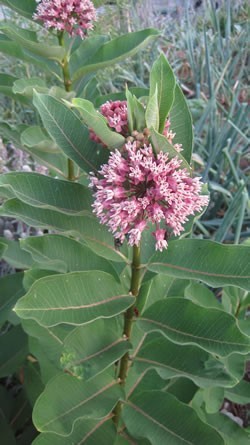
Photo by Amber Barnes, Pollinator Partnership.
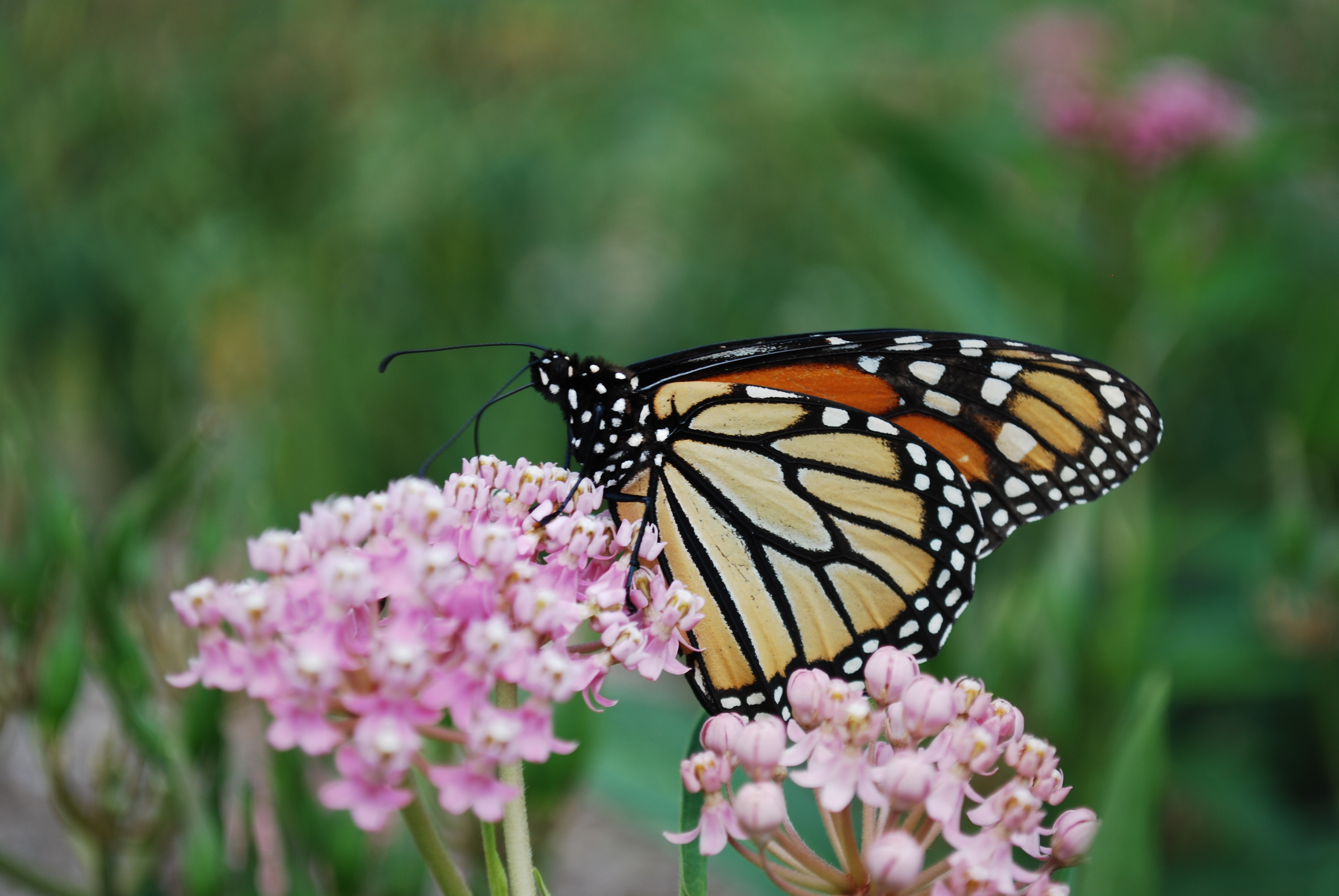
Photo by Amber Barnes, Pollinator Partnership.
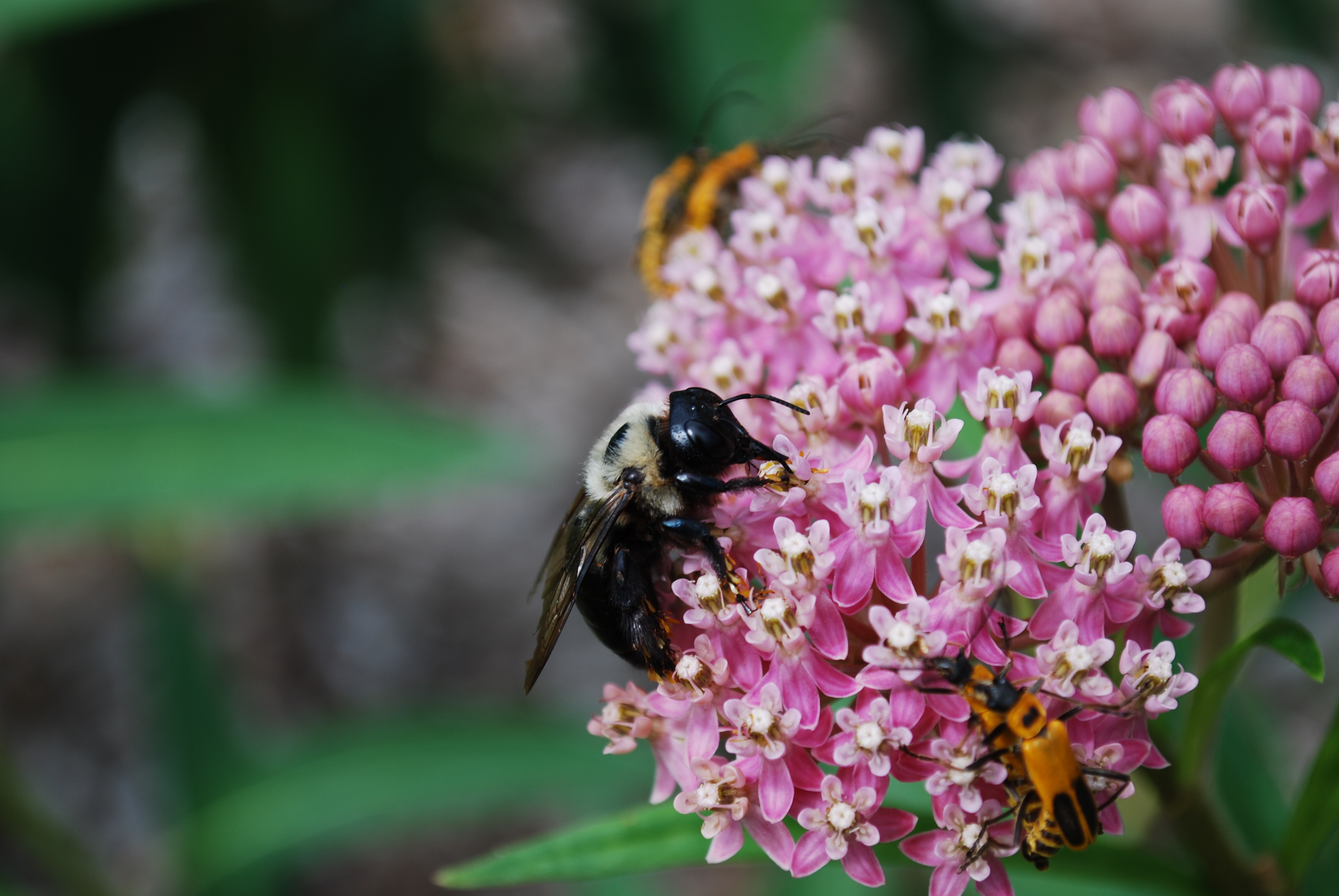
Geographic Distribution: Eastern United States, prairie states, and southern Canada from New Brunswick to Saskatchewan.
Habitat: Fields, pastures, fence rows, roadsides, and wide variety of other habitats as it is a very hardy plant.
Identification: Grows up to 5’ tall. Leaves are oblong; up to 8” long and 3.5” wide; upper surface is pale-medium to dark green and hairless; lower surface is densely covered with short, woolly hairs. Milky sap is released if damaged. Flowers bloom from the axils of upper leaves in pink or purple umbels up to 4” across; each is about ¼” across, consisting of 5 reflexed petals and 5 raised hoods with curved horns.
Common Pollinators: Honey bees, native bees, flies, wasps, moths, butterflies, and skippers.
NatureServe Conservation Status: G5 Secure overall; S3 Vulnerable in Manitoba.
https://www.fs.usda.gov/wildflowers/plant-of-the-week/asclepias_syriaca.shtml
https://www.illinoiswildflowers.info/weeds/plants/cm_milkweed.htm
https://www.wildflower.org/plants/result.php?id_plant=ASSY
https://www.missouribotanicalgarden.org/PlantFinder/PlantFinderDetails.aspx?kempercode=b480
https://explorer.natureserve.org/Taxon/ELEMENT_GLOBAL.2.131135/Asclepias_syriaca
Cobweb Thistle (Cirsium occidentale)
Cobweb thistle’s name refers to the cluster of phyllaries below the flowers, which appear to be growing through a dense cobweb. It is found throughout California and in some parts of Nevada, and Oregon. It is a larval host for painted lady, mylitta crescent, and California crescent butterflies, as well as a food source for bird species including the American Goldfinch (Carduelis tristis) that feed on its seeds.
Photo by Matt Lavin.
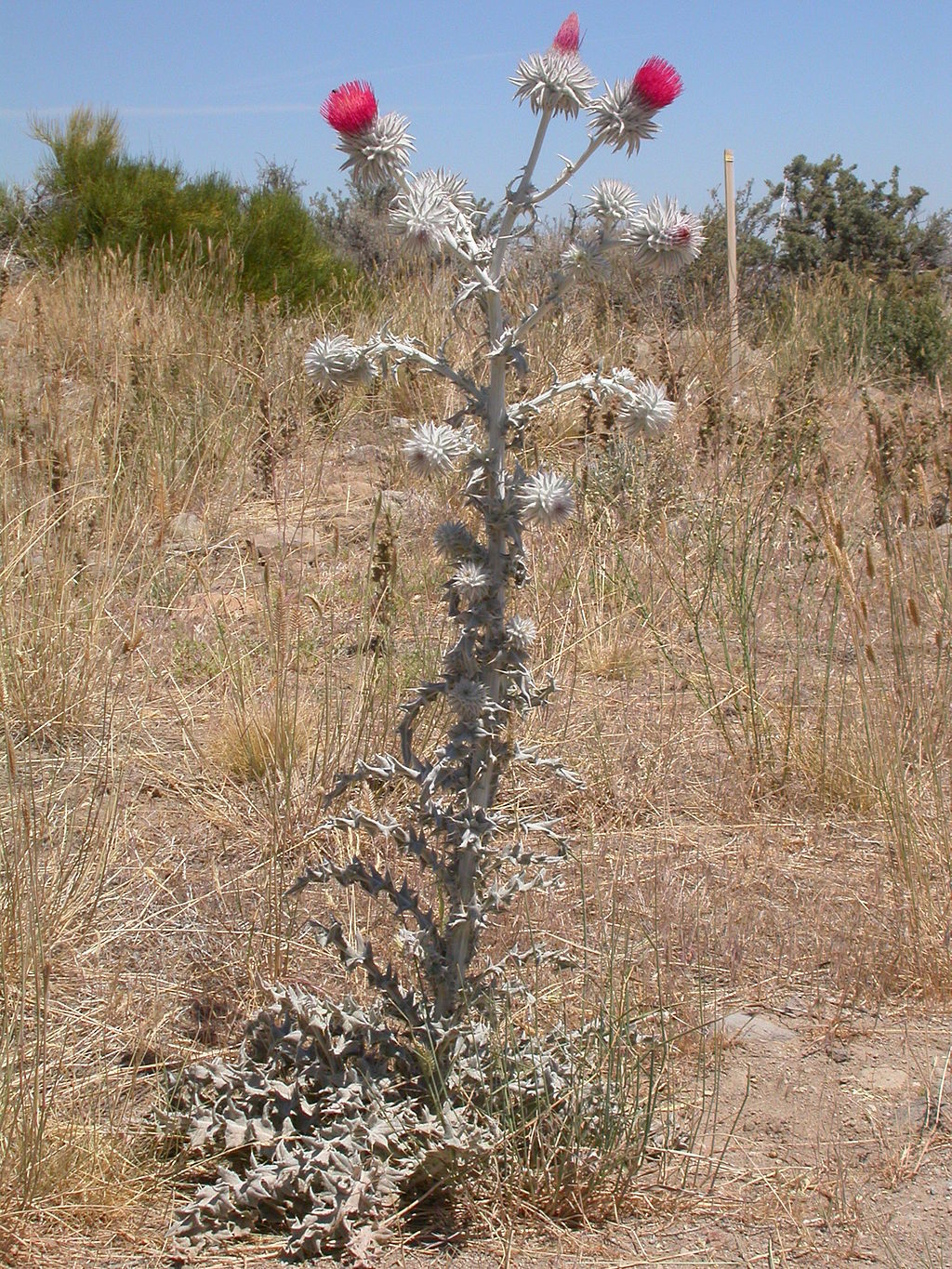
Photo by Will Elder.
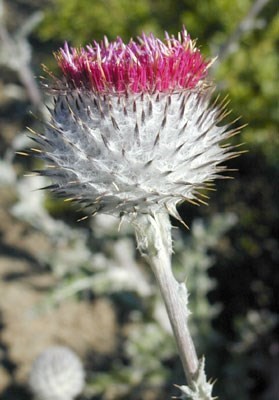
Photo by Ahafa.
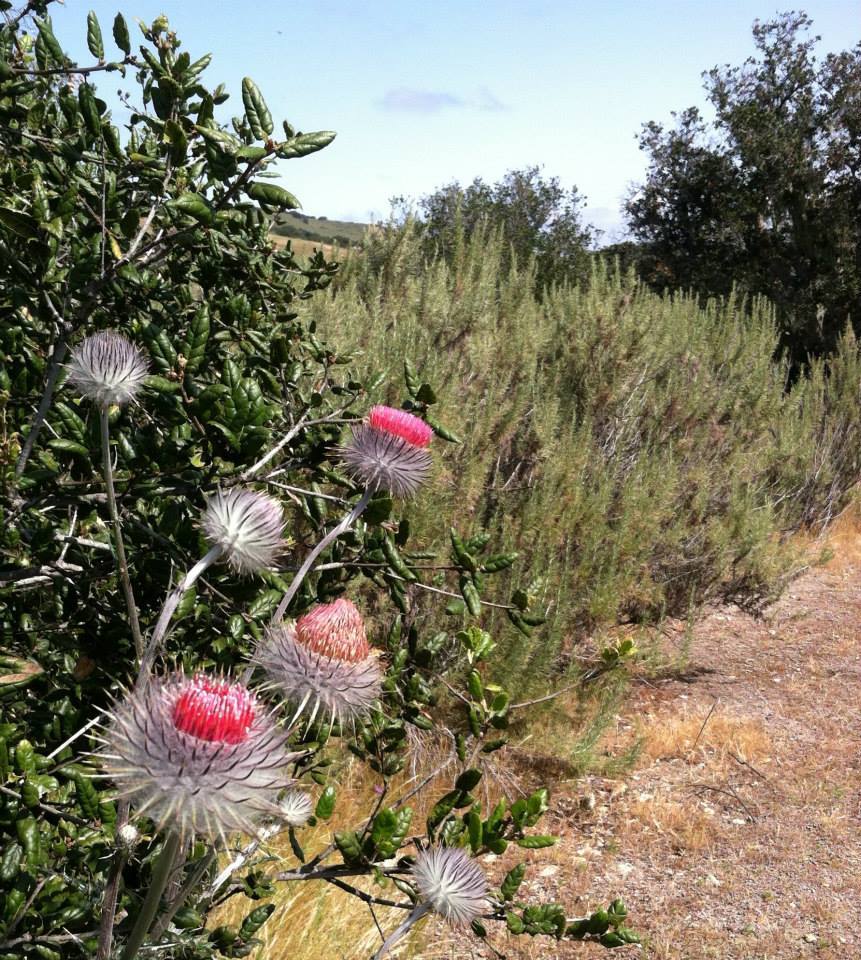
Geographic Distribution: California, northwest Nevada, and southwest Oregon.
Habitat: Grassland, coastal dunes, oak woodland, scrubland, and disturbed areas.
Identification: Stems growing up to 10’ tall, branching profusely, and appearing grey or white due to being covered in hairs. Leaves are up to 12” long, grey-green, covered in hairs, and toothed. Flowers grow in heads at the top of the stem; each is covered in large phyllaries with long spines that are heavily laced in fibers; the disc florets may shades of white, pink, red, or purple.
Common Pollinators: Native bees such as B. bifarius, hummingbirds, butterflies.
NatureServe Conservation Status: G3 Vulnerable.
https://www.wildflower.org/plants/result.php?id_plant=CIOC
https://www.americansouthwest.net/plants/wildflowers/cirsium-occidentale.html
https://www.pacifichorticulture.org/articles/thistle-lovers-all-the-cobwebby-thistle-as-habitat/
https://calscape.org/Cirsium-occidentale-()
https://ucjeps.berkeley.edu/eflora/eflora_display.php?tid=7069
https://explorer.natureserve.org/Taxon/ELEMENT_GLOBAL.2.143708/Cirsium_occidentale
Goldenrod (Solidago canadensis)
Goldenrod is native to much of Canada and the United States and can grow to 6’ tall. It can reproduce from rhizomes and grows in a number of different habitats, including abandoned farmland, pastures, fields, prairies, waste areas, and along roadsides, forming large colonies. Its large panicles of yellow flowers attract many species of bees and butterflies when in bloom from August to October. Its seeds are an important food source for the prairie chicken (Tympanuchus cupido), American goldfinch (Spinus tristis), and swamp sparrow (Melospiza georgiana), and its foliage is sometimes consumed by white-tailed deer (Odocoileus virginianus) and eastern cottontail rabbits (Sylvilagus floridanus).
Photo by Keir Morse.
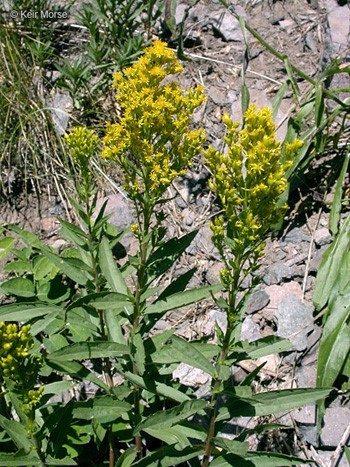
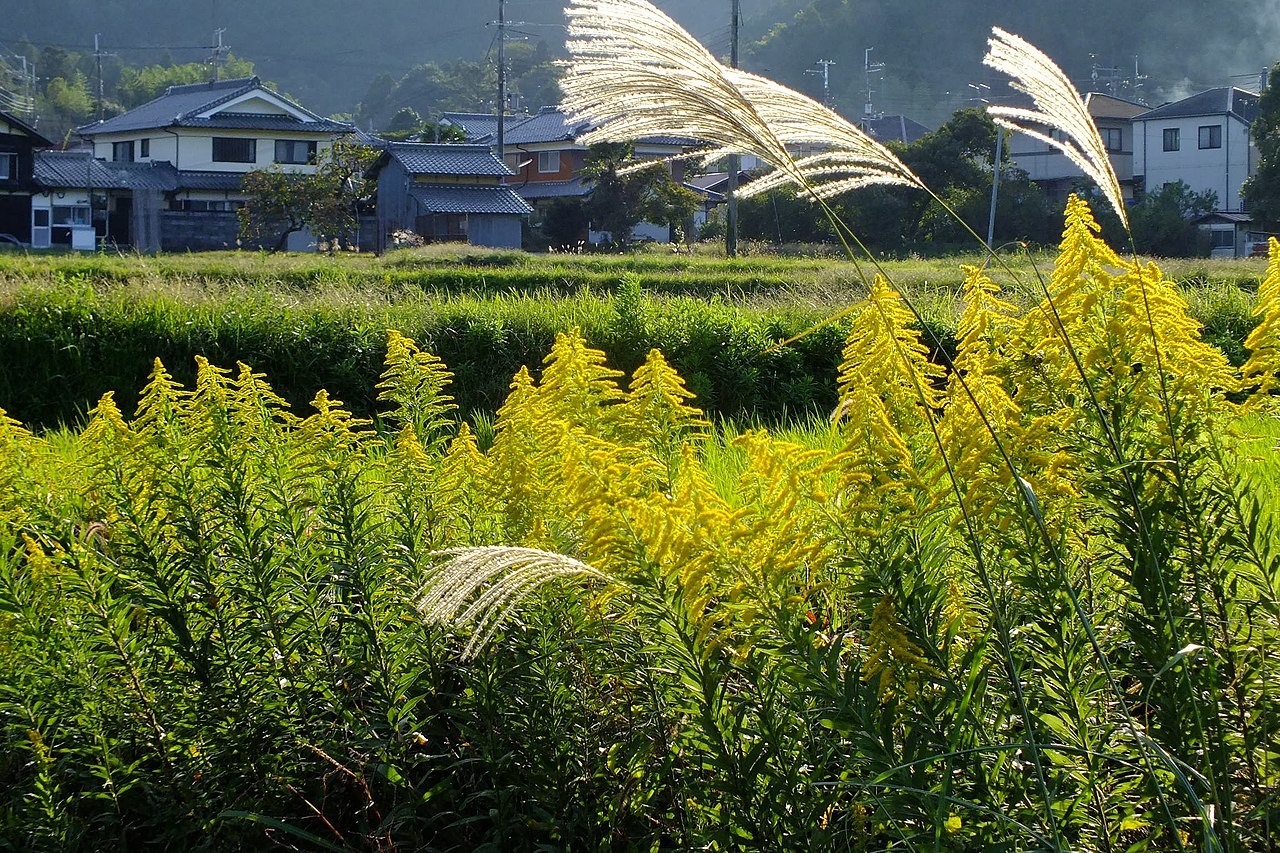
Geographic Distribution: Across Canada and throughout most of the United States except for Hawaii and some southeastern states.
Habitat: Grasslands, pastures, thickets, roadsides, and stream banks.
Identification: Central stem grows up to 6’ tall, having lines of white hairs, and is surrounded by alternate leaves. Leaves are narrow, toothed, and lanceolate; 6” long and 1” wide with hairy undersides. Flowers in large panicles at the top of the stem; each flower is less than ¼” across and yellow.
Common Pollinators: Honey bees, native bees, and butterflies, moths, flies, beetles, and wasps.
NatureServe Conservation Status: G5 Secure.
https://www.wildflower.org/plants/result.php?id_plant=soca6
http://www.missouribotanicalgarden.org/PlantFinder/PlantFinderDetails.aspx?taxonid=277473
https://www.fs.usda.gov/database/feis/plants/forb/solcan/all.html
http://www.illinoiswildflowers.info/prairie/plantx/cn_goldenrodx.htm
https://explorer.natureserve.org/Taxon/ELEMENT_GLOBAL.2.789830/Solidago_canadensis
Red Columbine (Aquilegia canadensis)
Red columbine is the only native columbine to eastern North America. It grows to about 3’ in height, and its distinctive red and yellow flowers can bloom from February to July depending on latitude. The downward facing, bell-like flowers feature backward-pointing spurs containing nectar that attract long tongued-insects. Red columbine is also an important nectar source for hummingbirds. It can grow in a variety of different conditions from woodland edges to river banks, alongside shores, and ridges. Red columbine is a larval host for columbine duskywing moths (Erynnis lucilius) and borer moths (Papaipema leucostigma).
Photo by Ragesoss.

Photo by Larry Stritch.
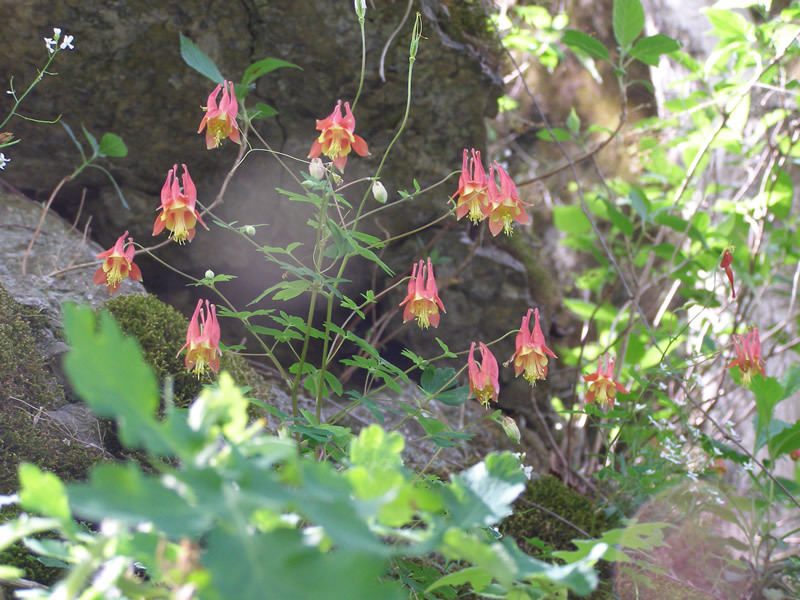
Geographic Distribution: Eastern Canada and United States; from Saskatchewan to Quebec, south to Arkansas and Georgia, with a disjunct population in central Texas.
Habitat: Needs well-drained soils and partial to full shade. Often found in woodland habitats.
Identification: Stems are round, reddish green, and may be either smooth or hairy, reaching up to 3’ tall. After the basal leaves, leaves grow alternately along the stem; leaves are divided into 3 leaflets and either smooth or hairy; each leaflet is obovate with 3 lobes and up to 3” long and 2” across; secondary lobes may be present. Flowers hang downward from the upper stems, having 5 petals and sepals, growing to 1 ½” long, and featuring nectar spurs and exerted stamens and styles; spurs and sepals are red to purple and anthers are bright yellow.
Common Pollinators: Hummingbirds, long-tongued bees, butterflies, and hawk moths.
NatureServe Conservation Status: G5 Secure overall; S1 Critically Imperiled in Florida and Mississippi.
https://www.wildflower.org/plants/result.php?id_plant=aqca
https://www.fs.usda.gov/wildflowers/beauty/columbines/aquilegia_canadensis.shtml
https://www.missouribotanicalgarden.org/PlantFinder/PlantFinderDetails.aspx?kempercode=b400
https://www.illinoiswildflowers.info/woodland/plants/wild_columbine.htm
https://explorer.natureserve.org/Taxon/ELEMENT_GLOBAL.2.135388/Aquilegia_canadensis
Flame Azalea (Rhododendron calendulaceum)
Flame azalea is a deciduous shrub that can grow as tall as 10’ and has brightly red, orange, and yellow colored flowers. It is named after these flowers that resemble candle flames, which bloom from May to June. It is found primarily in the Appalachian Mountains from Pennsylvania to Georgia. The exerted anther and stigma of the flame azalea make it hard for bees to pollinate, making the eastern tiger swallowtail its primary pollinator.
Photo by Arx Fortis
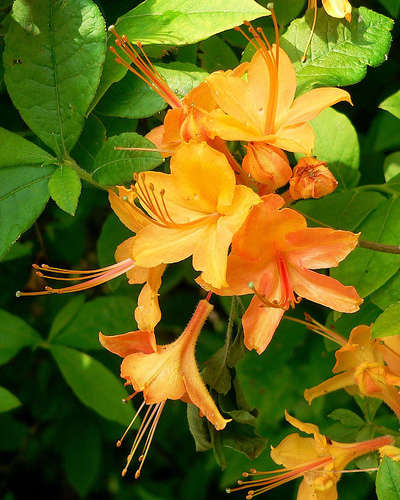
Photo by Stephanie Brundage.
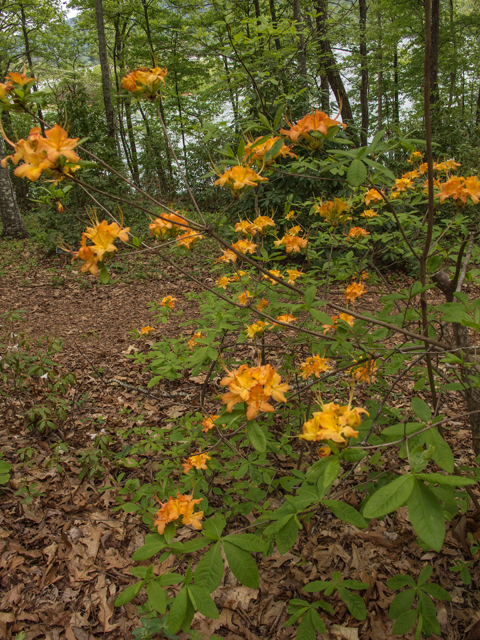
Geographic Distribution: Southeastern United States; in the Appalachian Mountains from Pennsylvania to Georgia.
Habitat: Sloped woodlands, mountain balds, and other areas that are dry and rocky.
Identification: An upright, branching, deciduous shrub up to 10’ tall and often up to 10’ wide. Leaves are medium green, turning yellow and red in the fall; up to 3” long, elliptic to obovate. The funnel-shaped flowers are usually 2” across, growing in groups of 5 to 10; flowers vary in color from yellow to apricot to scarlet; exerted anthers and stigmas.
Common Pollinators: Bumble bees and butterflies, especially eastern tiger swallowtail.
NatureServe Conservation Status: G5 Secure overall; S2 Imperiled in Ohio, S1 Critically Imperiled in Maryland, and SX Presumed Extinct in Pennsylvania.
https://www.wildflower.org/plants/result.php?id_plant=rhca4
http://www.missouribotanicalgarden.org/PlantFinder/PlantFinderDetails.aspx?taxonid=279977
https://plants.ces.ncsu.edu/plants/rhododendron-calendulaceum/
https://www.fs.usda.gov/database/feis/plants/shrub/rhocae/all.html
https://explorer.natureserve.org/Taxon/ELEMENT_GLOBAL.2.128837/Rhododendron_calendulaceum
Poster Sponsors
The Agricultural Research Service is the chief research for the Department of Agriculture. With 660 research projects and a $1.4 billion budget, the ARS focuses on finding solutions to our every day agricultural problems.
With 6,800 almond growers and 100 processors, the Almond Board of California represents these third and fourth generation farmers through investment in research and innovative ways to grow successful almonds.
American Beauties Native Plants helps provide its consumers plants for the survival of pollinators. By supplying the right seeds and plants for any habitat, American Beauties Native Plants helps ensure that each habitat is beneficial to the bees, birds, and many other insects.
The American Beekeeping Federation focuses on the success of honeybees and beekeepers small and large. Beekeepers rely on the educational information that this Beekeeping Federation provides through research in shrinking habitats, diseases, and other related honey bee issues.
The American Honey Producers Association is an organization created by beekeepers for beekeepers that was founded in 1969. This organization dedicates all their efforts towards legislation and research in order to help all beekeepers and support their general welfare.
The Animal and Plant Health Inspection Service is an agency of the United States Department of Agriculture. APHIS focuses on the plant and animal health and welfare through the protection and promotion of food, agriculture, and natural resources.
With over 100 years of almond work, the Blue Diamond Growers, have been working tirelessly to help the production of almonds to bring the world the best grown almonds. Through out the years of innovation, these growers have worked hard to claim the largest tree nut processing company of the world.
In order to have healthy people and a heathy planet, CropLife America uses cutting edge technology to support the efforts of protecting our crops, communities, and the ecosystem by targeting the threats and attacks of pest, weeds, and diseases in a sustainable fashion.
The Department of Defense’s Natural Resources Program aims to manage approximately 25 million acres of land, air, and water in order to support the military’s readiness for combat by conserving our natural resources.
Providing electricity for some 220 million Americans, the Edison Electric Institute represents all U.S. investor-owned electric companies. They envision a future of affordable, reliable, and sustainable electricity to improve the lives for all.
The Electric Power Research Institute is an organization that conducts research and develops solutions for challenges in electricity including the reliability, efficiency, affordability, health, and safety of the environment so that we can face our nations growing demand and dependency.
The Horticultural Research Institute is also recognized as the AmericanHort Foundation and has been in service since 1962. With over $7.5 million in research funds distributed to scientist and students, the Horticultural Research Institute helps improve the advances in technology and sustainability for the Horticultural consumers.
Rooted back in Japan, Mitsui Chemicals Group is an agricultural chemical company that researches, develops, manufactures, and sells pest management and crop protection products.
Monarch Joint Venture is an organization dedicated to the conservation and protection of Monarch Butterflies. The partners of MJV (including federal and state agencies, non-governmental organizations, businesses and academic programs) work to ensure a healthy Monarch migration through habitat conservation, education, and science across the United States.
The Monarch Watch is involved with the conservation of Monarch butterflies through education and research. This organization works closely to research the Monarch migration in the fall and assess the health and stability of monarch populations.
The National Institute of Food and Agriculture invests in regulation of US agriculture and food production to ensure that these industries do no harm to the environment or our communities.
Later named Natural Resources Conservation Service, the NRCS helps farmers, ranchers, and other landowners to conserve soil, water, air, and other natural resources by helping fund conservation projects, education, research among other operations.
The North American Pollinator Protection Campaign works alongside respected scientists, researchers, conservationists, government officials, policy makers, among many others to protect pollinators, raise awareness, and support a healthy and stable environment.
Founded in 1946, ShopRite has been providing its customers with grocery shopping satisfaction through its products and work in the community. Its Supermarket Careers program has received local, state and national awards, including the Secretary of Education’s Award, the highest honor available to vocational programs.
Open 364 days a year, the Smithsonian National Museum of Natural History offers free admission to its visitors. Its collections reflect on how humans have interacted with the environment. Through research in the lab and in the field, this museum explores and exhibits the billions of years throughout history.
Based in Switzerland, Syngenta is global company that conducts genomic research and produces agrochemicals and seeds. This biotech company works with farmers to make land as efficient and successful as it can be through sustainable practices.
Headquartered in Japan, Toyota has also taken part in environmental issues by creating a variety of environmentally friendly cars and technology to generate solutions to reduce Cardon dioxide emissions of each vehicle.
Established by congress in 1820, the United States Botanic Garden is one of the oldest botanic gardens in North America. The US Botanic Garden educates its visitors on the importance of sustainable living practices. Through research and education, the Garden promotes the diversity of plants and all the benefits of their life.
The United States Environmental Protection Agency focuses on the protection of human health and of the environment. Their mission is to have a cleaner, healthier environment by creating and enforcing regulations, more partnerships, and educational resources developed by scientist through research in order to address environmental issues.
Started in 1871, the United States Fish and Wildlife Service ensures the health of our environment by working with others to protect and conserve our fish, plants, wildlife and their habitats.
The Forest Service strives to support nature in sustaining life so that present and future generations can enjoy the beauty of our forests and grasslands.
The United States Geological Survey is an agency dedicated to providing data on the impact of climate change using relevant and useful information, as well as information regarding natural hazards that threaten our lives, our ecosystem, and environment.
Located in Walnut Creek, California, Valent provides sustainable solutions for the growing demand on agriculture and production. Working with farmers directly, Valent is able to help customers with expertise, services, and tools that benefit the land and production.
Waste Management, Inc. is an American company that keeps our communities and environment clean through comprehensive management of waste disposal and recycling.
Through partnerships and many educational resources, the Wildlife Habitat Council programs focus on the health of the environment and its sustainability. The Council’s values are to be open, true, driven, and bold, and they work alongside fellow community organizations, government agencies, and community members to help protect natural habitats and wildlife.
Science Advisors

Dr. Gary Krupnick is the head of the Plant Conservation Unit in the Department of Botany, National Museum of Natural History at the Smithsonian Institution in Washington, D.C. His research examines how data from herbarium specimens can be used in assessing the conservation status of plant species. Gary serves on the Steering Committee of the North American Pollinator Protection Campaign.

Dr. Kimberly Winter is the NatureWatch National Program Manager for the U.S. Forest Service in Washington, D.C. She holds a Ph.D. in Wildlife Ecology and Management and a Master’s degree in Ecological Anthropology. Throughout her career, Kim has sought ways to bring the value of conservation to the public eye by promoting opportunities for general audiences to immerse themselves fully in nature, whether through programs like freshwater snorkeling, special events hosted by National Forests and Grasslands like Fishing Days, Bat Week, and Pollinator Week; or online using wildlife critter cams and the NatureWatch website.

Dr. Lora Morandin has been doing research on bees and pollination since 1997. She earned her PhD from Simon Fraser University in British Columbia studying modern agriculture and pollinators, followed by post-doctoral research at the University of California, Berkeley working on enhancement of native pollinators and natural enemy insects through small-scale farm restoration. Lora has co-authored books and book chapters, created outreach and technical guides, and has about 30 peer-reviewed publications on pollinators and sustainable agriculture, including innovative work on economic benefits of ecosystem services. She has consulted for government and industry on diverse ecological topics such as greenhouse coverings, seabird oiling from offshore oil and gas operations, and honey bee health research gaps.
